BRAND PURPOSE:
The Definitive Guide [21 Best Examples]
Brand Purpose is not a new topic anymore.
It’s been a topic of debate for years now and in some circles is even seen as a “dirty word”.
It’s been executed masterfully, overused distastefully and even abused by brands that want to leverage its benefits without merit.
But despite many believing it was a marketing fad, It has catapulted some brands to “Iconic” status.
This isn’t just another article on “The Purpose Of A Brand”,
It’s everything you ever needed to know about Brand Purpose As A Branding Strategy.
Using research, statistics, examples and visuals, we’re breaking down this topic once and for all,
We’re highlighting the pioneers, the phonies, the inspiring successes and embarrassing failures.
You’ll see why Purpose is here to stay, and give you a step-by-step execution blueprint so you can, understand, discover, strategise and execute purpose into your brand.
![BRAND PURPOSE The Definitive Guide [21 Best Examples]](https://brandmasteracademy.com/wp-content/uploads/2019/11/BRAND-PURPOSE-The-Definitive-Guide-21-Best-Examples.webp)
Contents

CHAPTER 1

CHAPTER 2

CHAPTER 3

CHAPTER 4

CHAPTER 5

CHAPTER 6

CHAPTER 7

CHAPTER 8
Don’t Have Time To Read It All Now?
No problem. I’ll shoot it over to you so you can read it when you
have time. Just let me know where to send it (takes 5 seconds).
Chapter 1
Brand Purpose Fundamentals
Before we deep dive into step-by-step brand purpose strategies and processes, we need to first understand where this desire for brands to be all “purpose driven” has come from.
It’s not something brands talked about in generations gone by.
So why now?
Brands weren’t working to a higher purpose 20 years ago, so what’s changed?
What’s the driving force behind purposeful brands?

What’s The Drive Behind Purpose Driven Brands?
In the 80’s and 90’s communication between consumers and brands was one way.
Brands dictated terms and the consumer had very little say in the relationship.
It was a case of like it or lump it.
The voice of the consumer was small, squeaky and could be talked over quite easily or simply ignored.
Then, the digital revolution came along and conversations went online which started in the beloved 90’s chatrooms.

Suddenly consumers started to voice their opinions and they quickly realised the power in their numbers.
Brands were forced to backtrack, change course, sit up straight and listen and were dragged kicking and screaming into the world of the new powerhouse…

We’ll dive into that a bit deeper later, for now let’s strip back purpose and dive into why.
PRO Brand Strategy BluePrint
Build Brands Like A Pro Brand Strategist

The Purpose Breakdown
We as humans are driven by purpose and we seek meaning in our lives.
With self-actualisation, we can reach our full potential and realise our purpose.
In the Oxford Dictionary, Purpose is defined as “The reason for which something is done or created or for which something exists”.

Maslow’s Hierarchy of Needs, a well-renowned psychological theory around motivation, suggests that we all have basic needs, which are tiered by priority.
When each need is met, the next is the most pressing.
In theory, only when you satisfy your Physiological, Safety, Love and Esteem needs, can you move on to Self-Actualisation, which is the desire to become the most you can be, or…
To realise your purpose.
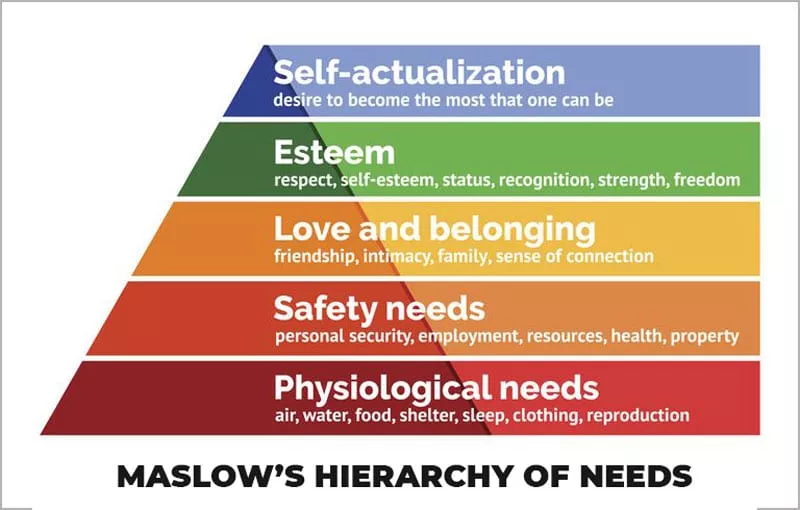
Consumers today, headed up by gang leaders, The Millennials, are more self-aware than ever before and as such are more conscious of their purpose and place in the world.
They are selective about the relationships they keep and seek friendships with alignment in beliefs and values, which extend to their relationships with brands.
Explore Brand Strategy
Programs & Tools
The Great Purpose Divide
We as people have our own ideas, thoughts and points of view.
In many cases, we surround ourselves with people that are like-minded and share the beliefs that we do.
This can be from basic values like how treat people to political points of view.
As brands become more and more humanised with everything from a look and feel to a personality and a tone of voice, they are increasingly adopting humanistic traits and consumers want to know what they believe.
Personalities are becoming even more real with brands adopting brand archetypes to specifically evoke certain emotions within their audience.
Just as you and I might look for the meaning and purpose in our lives, brands have been taking the same approach.
Now, this is often where the arguments about purpose begin.
Are brands seeking out a purpose because they want their consumers to think they are like-minded and buy their products or is there actually an element of substance behind it?
It’s obviously to win more business right?
If we as consumers didn’t voice our beliefs would they?
There are two arguments to this:
NUMBER 1: is that maybe they still would. The new, social aware generations are not just consumers, they are also business leaders.
NUMBER 2: is that no, they wouldn’t. Brands have already proved that before the customer had an amplified voice, they tended to do what they wanted, which in most cases were profits first.
One thing is for certain, both consumers and brands are changing.
The Ignorant Brand Bully Is Dead
“Customer is King” is by no means a new concept.
Back in 1876, The father of modern advertising and a pioneer in marketing John Wanamaker, who turned an abandoned railway depot in Philadelphia into one of the world’s first department stores, stated;
“When a customer enters my store, forget me. He is king,”
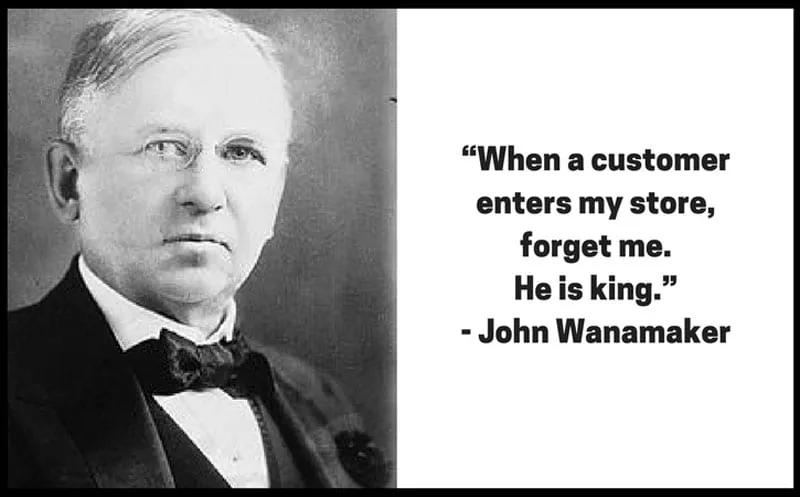
Though this was a revolutionary concept at the time, brands the world over, embraced the idea for the next 120 years.
The reality however was that the brands held all the cards.
The communication was one way advertising with brands telling consumers what they needed and customers juggling the options they were served.
This “Open Letter To Ignorant Brands” sums it up in the first paragraph.
“You romanced me. Secretly, I hoped to see an improved version of myself by virtue of your promises.
Then through several engagements, I discovered you don’t care about me at all.
I needed love so badly that I ignored the early signs.
Now I can see clearly, you are just another greedy bastard.”
Brands promised the world but If the customer didn’t like something about the brand, their products or they way they went about their business, well, that was just too bad.
What were they going to do about it?
Write a strongly worded letter that would give the staff a chuckle?
But as traditional advertising is finding out the hard way, the days of one-way broadcasting are dying.
Why Do Brands Need Purpose?
With the birth of the internet and then email, consumers had already begun flexing their vocal muscles.
Email petitions had already influenced multi-national brands though the real shift of power came with social media.
Tired of being dictated to ignored or even bullied by brands, consumers, armed with their new MySpace, Bebo or Facebook profiles, started calling brands out for unethical behaviours.
Reported In 2007 by the BBC, confectionary giant “Mars” was forced to make a swift U-turn over plans to use animal products in their chocolate on the back of a of a public backlash.

When the UK vegetarian society got wind, they urged all their members to complain to the company, local MP’s or their local newspapers.
Within a week, the firm had received more than 6,000 calls and e-mails and 40 MPs had signed a petition.
Masterfoods promptly agreed to revert to the old recipe, apologised and declared the “consumer is our boss”.
Boom!
And just like that the game had changed.

Vodafone in 2010 in Australia, were synonymous with their poor service and even worse customer support.
When Adam Brimo, a 23-year old student hit boiling point, he created the website vodafail.com which quickly drew over a million visitors and gave 22,000 reviewers a chance to unleash their fury.

Brimo unknowingly started a movement that resulted in Vodafone investing $1Billion in service upgrades.
More and more stories began to spread of brands altering unethical behaviours and bowing to public pressure and suddenly, the once hushed consumer now had a swagger.
The hashtag, later came along and began to spark bigger and broader social concerns, some of which became viral phenomenon’s.
Remember the ice bucket challenge?

Here are 8 examples of the humble hashtag sparking mass movements.

Conversations grew louder.
This Millennial’s confidence grew and they began to realise that they had a voice and a platform that previous generations did not, and they weren’t about to waste it.
How Brand Strategy Evolved
In the early years of digital activism, anyone with a social media profile and a few friends had the power to wield their new, extremely loud voice.
No brand, anywhere was safe anymore, and some took heavy beatings.
Many a multinational brands bowed down with bloody noses, altering courses and changing decisions in the face of a billion potential whistle blowers.
Brand apologies, unheard of before social media came along, have become a common theme.
Here’s a breakdown of The good, the bad and the WTF of brand apologies.
Some of them have actually become good at it, like KFC with this chuckler.

Strategic brands quickly learned what not to do and were forced to consider what the public wanted, especially if there was a perception in the market of unethical behaviour.
Smart brands began to thinking ahead and being proactive.
Instead of walking on eggshells worrying about what the public wanted, they did some Googling and snooping on Facebook and found out.
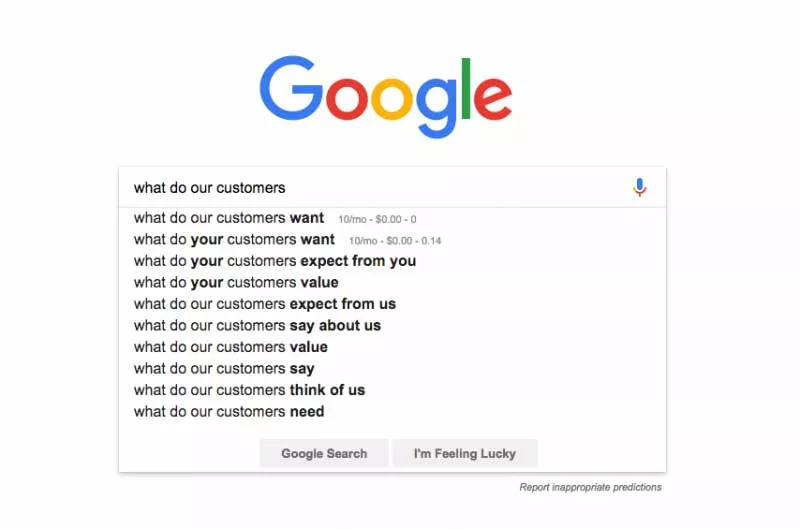
More and more brands began to take an interest in hashtags, and social media groups to better understand the conversations their customers were having.
With a better understanding of what their customers wanted, brands started taking positions and addressing some of the social concerns of their customers which gave rise to today’s purpose driven brands.
How Brands Became Political
Increasingly, brands are now being asked by the next generation, to take positions on political issues.
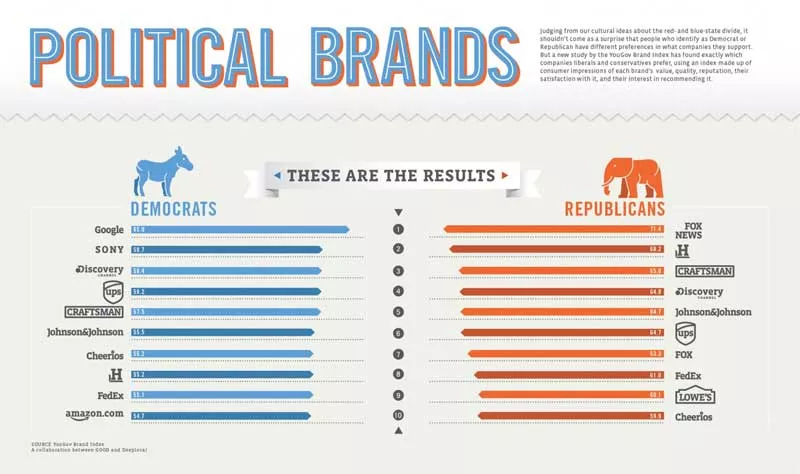
More brands are walking the political plank, with possible outcomes including backlash, boycotts, or a raving army of advocates.
Silence on sensitive political issues, may still fly for now, but it seems we are approaching a time where CEO’s of major brands will ned to employ political brand advisors, as highlighted by AdWeek.
The most noteworthy political position by a brand to date was Nike’s alignment with Colin Kaepernick in his protest against police brutality.
Either way, wading into political waters is uncharted territory but the transparency is refreshing.
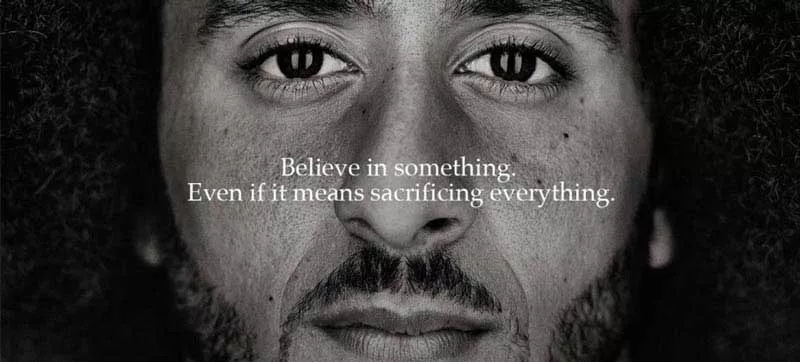
According to social Sprout
“Consumers’ most common emotional reactions to brands taking a stand on social were positive, with “intrigued,” “impressed” and “engaged” emerging as the top three consumer reactions.”
According to Target Marketing Mag, 82% of liberals like brands with their politics.
Chapter 2
The Golden Circle Pioneer
Brands adopting purpose didn’t come naturally.
In fact, the reality is, they were dragged into the purpose-driven era kicking and screaming.
But in 2009, a little known author by the name of Simon Sinek introduced the Golden Circle.
He got on stage at his now infamous Ted Talk and told Entrepreneurs and Business Leaders to “Start With Why”.
It’s still one of the most-watched Ted Talks of all time.
And his book also titled: “Start With Why”, influenced the branding industry.

Why Start With Why?
The name Simon Sinek and the term Brand Purpose are synonymous.
It’s fair to say he’s the brand purpose daddy.
His Ted Talk is the most watched of all time and his purpose is, well… purpose.
In case you haven’t seen it, here’s the short version.
In 2009 he wrote a timely book “Start with Why”, Sinek identifies the “Why” as the holy grail of business and branding.
The book looks at why some leaders and organisations inspire while others don’t.
He uses the world’s biggest brand “Apple” throughout in his examples.
He asks why one “computer company” has been able to defy the odds and earn so many loyal brand advocates.
The key takeaway is that:

Although Apple is used as examples throughout, don’t be put off.
This is not just for the big boys.
It’s the foundation and starting point for the brand purpose of any organisation big or small.
The key term is “Why”.
Purpose is all about answering the question:
Apart from Commercial Interest, Why is it that you do what you do?
The obvious commercial benefit is simply the bloodline of a business.
Just as with Maslow’s Hierarchy of Needs, there are some fundamental needs that need to be met before Purpose comes into play.
How To Use The Golden Circle
In Sinek’s book he uses The Golden Circle to illustrate how brands communicate.
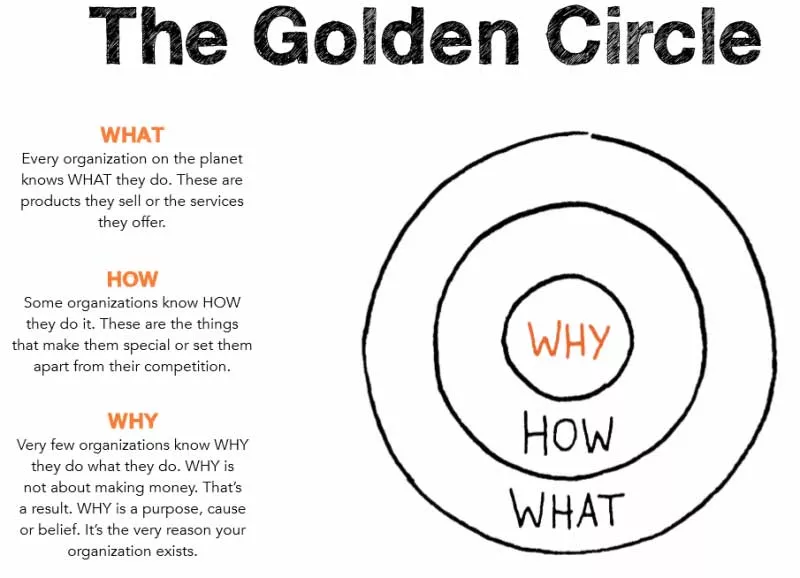
The inspired organisations (regardless of their size or industry) all think act and communicate from the inside out.
They understand their why and their reason for being and that transcends through all their communication.
Only when we understand how our brains receive communication, can we understand why we need to communicate from the inside out.
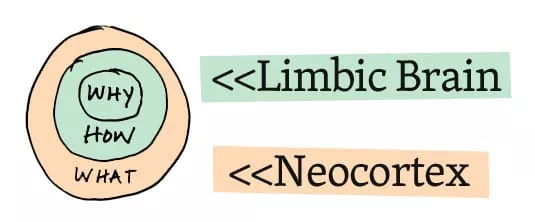
Neocortex:
This is our newest area of the brain, our homo sapien brain, and this corresponds with the WHAT level of the Golden Circle.
This is responsible for all our rational and analytical thought and language.
This allows us to look through vast amounts of facts and figures, but it doesn’t drive behaviour.
Limbic Brain:
The Limbic brain comprises of the middle two sections and is responsible for all our feelings, such as trust and loyalty.
This area of the brain is responsible for all human behaviour and all our decision-making.
It is where our emotional connection takes place, and it has no capacity for language.
It’s the separation of these areas of the brain that makes it so difficult to articulate our feelings. and why we often hear the saying; “words can’t explain how I feel”.

Simon Sinek’s book and The Golden Circle gives brand builders a tool to find their why and communicate to their audience from the inside out.
When you do that, everything becomes easier.
“Putting in long hours for a corporation is hard. Putting in long hours for a cause is easy”. – Elon Musk, Tesla
Chapter 3
The Great Purpose Debate
Brand purpose is a topic of fierce debate.
Passionate advocates and passionate opponents sit on opposite sides of the fence throwing stones at each other.
Why? Well, there are examples of authentic and impactful purpose and there are examples of unethical and distasteful purpose.
Are brands actually trying to help, or just make more money?
When the end goal of a business is to turn a profit, anything to the contrary is scrutinised.
But if the by-product of a growing brand is a social or environmental cause addressed, aren’t we moving in the right direction or is it just too little too late?

Brand Purpose Confusion and Myths
A common challenge when looking to develop (or just understand) a brand purpose is that the term is often used interchangeably with others terms and can cause confusion as pointed out by Harvard Business Review.
Brand purpose is quite often lumped together with one of the many other organisational statements that organisations construct.
So let’s define these and nip this in the bud once and for all.
Purpose (The Why):
Why do we do what we do (aside from commercial benefit).
“To accelerate the world’s transition to sustainable energy”. – Tesla
Vision (The Where):
Where is your brand going and what does that future brand look like?
“To become the world’s most loved, most flown, and most profitable airline.” – Southwest Air
Mission (The What):
What are you committed to in realising your vision?
“Build the best product, cause no unnecessary harm, use business to inspire and implement solutions to the environmental crisis.” – Patagonia
Values: (The How):
How will your brand go about its business in realising its vision for the future?
“Sell good merchandise at a reasonable profit, treat your customers like human beings, and they will always come back for more.” – L.L.Bean
In a single statement (in theory), a brand could identify it’s
- Why
- Where
- What and
- How
And that’s the cause for confusion
Even if you live by these rules of thumb, you may work for, or come across brands that do things differently.
It’s not uncommon to see brands (even multinationals) put forward a purpose that is simply a mission of their “What”, not their “Why”.
It’s also common for Purpose, Mission Statements and Vision Statements to be one and the same, or doubled up.
If their statement can answer the question:
“Aside from commercial interest, Why do we do what we do?”
Then that it their purpose.
If it can’t. Then it’s something else.
Brand Authenticity and Fake Purpose
On the back of so many so-called purposeful brands coming out of the woodwork, the public has become skeptical.
Some brands, even big hitters as you’ll see later, have been called out for Purpose Washing.
What is Purpose Washing?
When brands attempt to unethically ride the coat-tails of purposeful causes with thinly veiled campaigns that have little to no substance.
Essentially, the brand wants to be seen as doing good aeven when there is no real commitment or follow through to go with their claims.
The focus has turned to the authenticity of the purposeful communication (and communication in general) of all brands, not just those that claim to be purposeful.
In general, people are less trusting of media and brands today than in times past.
Fake news has fanned the fires of distrust with more people saying they are unsure of what to believe in the media.
The Havas Media Group also backed up this sentiment with their study, stating that only 57% of brands are trusted worldwide
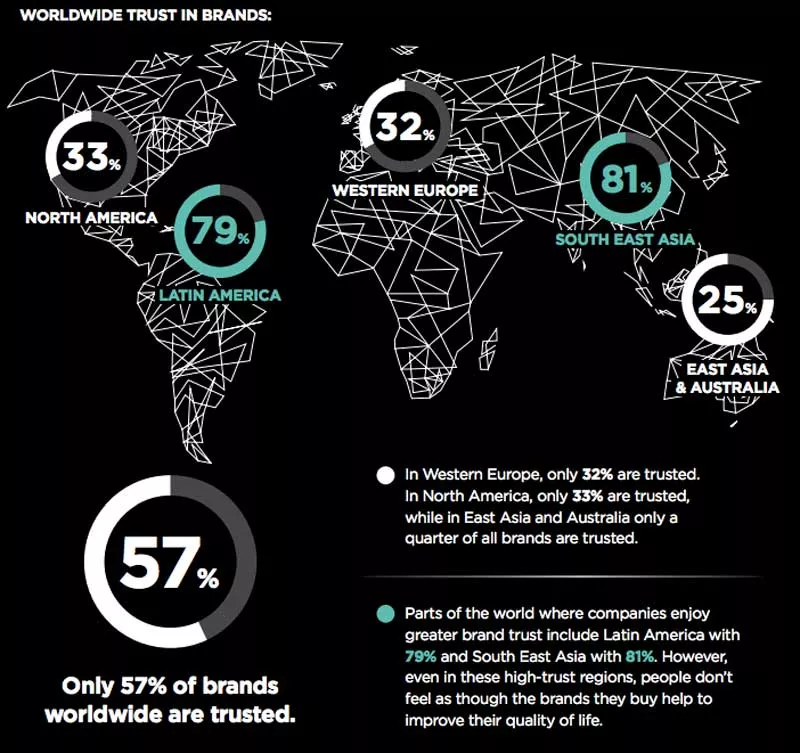
According to Radley Yeldar who research the impact of purpose driven brands:
“Too many brands are slapping a hastily-created statement on their website. They’re promoting it through big marketing campaigns. They’re not stopping to consider the impact that it should have on the way it operates as a business. And it’s not working.”.
Consumers want brands to behave a certain way but brands beware.
Your purpose had better have authenticity, substance and actions behind it rather than a couple of paragraphs on an “Our Purpose” page of your website.
Brand authenticity (and inauthenticity) are hot topics and brands that jump on the “Purpose” bandwagon with the only goal of reaping perception benefits; should expect a fiery backlash if called out.
In 2017 amid the Black Lives Matter movement, Pepsi released an ad that they said, “was trying to project a global message of unity, peace and understanding”.
Unfortunately for them, the world saw it for what it was.
An inauthentic attempt to leverage a sensitive issue for commercial benefit.
The backlash was swift and widespread which resulted in Pepsi pulling the commercial the next day and issuing the following apology:
“Clearly we missed the mark, and we apologize.
We did not intend to make light of any serious issue.
We are removing the content and halting any further rollout.
We also apologize for putting Kendall Jenner in this position.”
Not even when Pepsi nearly killed Michael Jackson when filming their commercial in the 80’s were they so formally apologetic.
How things have changed:
On a side note, they did pay him $1.5 million compensation, which he promptly donated to a purposeful cause; a clinic to support burns victims.

The Argument Against Brand Purpose
For every advocate of brand purpose, there is an opponent pointing to bottom lines, inauthenticity, shareholders and the fate of CEO’s who allocate capital to “airy fairy” ideas.
Brand purpose in many quarters is seen as a marketing fad.
That it’s simply an attempt by brands to appear to be doing good when in fact it’s just an initiative that the marketing department came up with as a means to increase some other metric being measured.

Even if it’s steeped in authenticity and there are genuine and honest roots in the cause, It will always be a nice to have behind solid sales and a cast iron business plan.
These points are relevant.
It’s easy to understand, especially in the small business space, that business leaders have more important fish to fry than trying to save the world.
It’s not their responsibility and they don’t want to look like a hypocrite either.
“How can I save the world when I’m barely saving myself!
I have rent, staff and contractors to pay, and those facebook ads are sucking all my marketing budget without giving anything back!”
– Said small business owners everywhere.

As we covered earlier, the number one purpose of a brand is to generate revenue and profit.
All brands are businesses and without that revenue to feed the outgoings and promote the incomings, they would be someone’s expensive hobby or they would simply cease to exist.
Amazon (a company that isn’t struggling to make ends meet) has run into its fair share of unethical missteps in recent years.
Reports of staff being overworked and underpaid with timed toilet breaks highlight the harsh conditions their workers endure.
Enter your text here...
If brand purpose really was as impactful as the do gooders say, if the consumer was as aware as bring suggested, if brands were at the mercy of what we all think then surely Amazon would be in a world of hurt right?
If you want to look at brand purpose as a whole, then you should look at both sides of the coin.
Out of the many opponents of purpose, some write compelling arguments against the strategy.
Like this one, that shoots down the evidence and logic used in Jim Stengel’s highly influential book “Grow”.
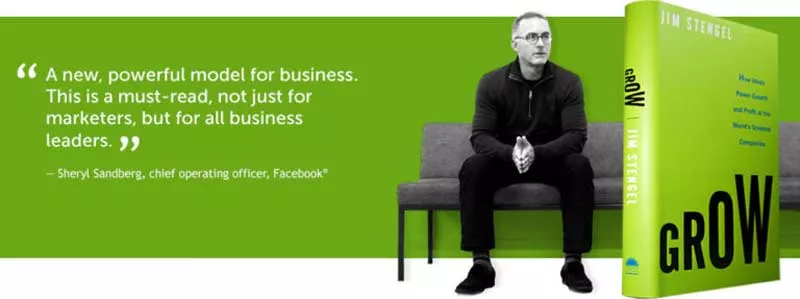
Marketing Weeks business columnist of the year Mark Ritson, pits Senge’s position against another vocal and well-respected branding expert Byron Sharp in his article “The Battle For Branding’s Soul Is On” concluding that he sits somewhere in the middle of both.
Purpose Strategy Vs Business Strategy
The opponents are right about one thing.
Brand purpose will never stack up against solid sales figures and a cast iron business model.
Though it’s not intended to stack up against them.
It’s intended to support them so the solid sales figures of today, stay solid when competitors come to take their market share later on.
Purpose is a Branding Strategy, not a Business Strategy.
As we touched on earlier, in Abraham Maslow’s hierarchy of needs, there are some fundamentals like food and shelter that are prioritised before even thinking about self-actualisation and what one’s purpose in life is.

If you don’t have a solid business plan and a functional go-to-market strategy then a fluffy purpose will help you as much as an ashtray on a motorbike.
Yes, brand purpose is about having a moral reason for being, aside from commercial interest that’s aligned with what your audiences’ believes.
But there are a few ducks that need to be in a row before this becomes a focus.

Are consumers buying on Amazon because of their “Why”?
That’s a big fat No.
We all know why Amazon does what they do and there is no clearer confirmation than Mr Bezos’ bulging bank account.
People are buying on Amazon because they have such a unique business model and level of cost and convenience that is unmatched in the market.
Which begs the question…
Where is purpose playing out in all of this?
Does Amazon even attempt to give back?

Well, yes…. Kind of.
AmazonSmile, launched in 2013 donates 0.5% of sales to charity.
So, for every $1,000 you spend, $5 will go to charity.
Wow Amazon…. Wow!
Amazon is an anomaly though because it has no competitors offering the range of products they do with the price and convenience they do.
Branding is about giving an audience a reason to choose your company over another in a competitive market.
Branding can influence their choice and then works to build a bond so when competitors come knocking, loyalty keeps them at bay and protects your market share.
Aside from suggesting more products that you might like (which is really just asking you to spend more), Amazon don’t break their back to build a bond with their customers.

An authentic purpose earns its stripes in a competitive market and there are none close to the e-commerce giant.
Their range of products and convenience means has Amazon as such a dominant force that the market is not competitive.
If one day however, a purpose driven competitor emerges that matches them on range, price and convenience with an authentic purpose to do some good in the world, do you think Amazon’s customers will stick around out of loyalty?
My guess would be that Mr. Bezos would have a cart problem.

Amazon are so far out in front of everyone else.
As long as Amazon continue to offer a far greater level of range and convenience, then this is not an environment for a discussion on a competitive brand purpose.
Unless the market is competitive consumers will follow the range and convenience that Amazon offers them.
It’s only when the market catches up, that their lack of purpose will come into focus.
Will that ever happen? Not in the near future I don’t believe.
The Argument For Brand Purpose
It’s pretty clear that many brands are using purpose as a marketing tool rather than instilling it as the fabric of their business.
But that’s like using a hammer to clean your teeth.
It doesn’t mean the hammer is broken.
A Harvard Business Review global survey of 474 executives found that an overwhelming majority believe that a strong sense of purpose in an organisation has a positive impact on:
Employee satisfaction
Brand Advocacy
Transformation Efforts
Higher quality products and services
Customer Loyalty
If you have the time, it’s fairly chunky but jammed with useful insights some of which I’ll cover below.
The survey defined organizational purpose as:
“an aspirational reason for being which inspires and provides a call to action for an organization and its partners and stakeholders and provides benefit to local and global society.”
So what does that mean?
Essentially, businesses are putting new goals in place that were never part of the makeup of their businesses.
Goals that in short, aim to make the world a better place.
Sounds lovely doesn’t it? In theory anyway.
Heading In The Right Direction
But even if only a small percentage of these businesses are successful in their endeavours, circumstances might change for some people, animals, plants or trees.
I mean, when businesses were creaming it in the 80’s, how many were putting some of their profits back into noble causes?

It certainly wasn’t Wall Street and the business leaders of the day.
Of course, CEO’s aren’t going to suddenly become Ghandi.
But it’s a few steps in the right direction.
And even if you listen to the detractors and doubters, momentum is building.
It’s Hard To Argue With Numbers
The HBR survey found that most companies in the survey fall into three categories with respect to purpose:
#1 PRIORITIZERS
Companies that already have a clearly articulated and understood purpose (39 percent);#2 DEVELOPERS
Companies that do not yet have a clearly articulated purpose but are working to develop one (48 percent); and#3 LAGGARDS
Companies that have not yet begun to develop or even think about purpose (13 percent)
The Volume Is Getting Louder On Purpose
For all the arguments the critics of purpose, one thing they can’t deny is that the term “brand purpose” has been increasing in volume over the last five years.
Global multi-brand organisations have been joining in on the conversation about broad social and environmental concerns with many adopting a purposeful strategies and announcing commitments to a given cause.
Unilever global brand portfolio pushes past the 400 mark.
They are one of the vocal organisations on not just the wider benefits of purpose but the benefits to the bottom line.
They live by purpose so much so that it has become part of the fabric of the business as outlined by their 5 golden rules
(Picture ) Unilever – 5 golden rules
If you want to know if purposeful brands outperform non-purposeful brands or not, then Unilever is better placed than anyone to speak about it:
Unilever are just one of many.
Some are introducing purposeful initiatives into their business strategy while others are looking to push the conversation of brand purpose.
Can Purpose Really Drive Growth?
As more brands are reporting greater impact of their purposeful endeavours, more organisations are looking to measure that impact.
Havas Media Group publish an annual global analytical report that looks at:
- 300,000+ people,
- 1,500+ brands
- 15 industries
- 33 countries.
The latest paper from Havas shows that meaningful brands (those with an active purpose), outperformed the stock market by 206% over the last 10 years.
They also found that meaningful brands increased their KPI’s by 137% compared to those operating without a purposeful meaning.
Probably their most eye opening stat was that people wouldn’t care if 77% of brands disappeared.
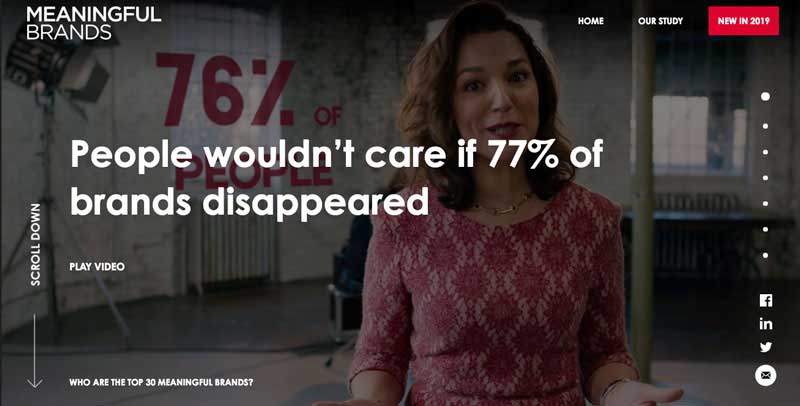
Havas aren’t the only ones looking at and measuring the impact purpose has on brands.
EY, another vocal advocate of brand purpose further drives home the point from their research.
Purpose Makes People Happy

In this world of Stats, KPI’s and metrics, everything is measured to weigh its worth and purpose is no different.
Without all of these numbers pointing to increased market share, ROI and growth, then purpose wouldn’t see the light of day.
But as much as brand purpose has the measurements to prove its worth, when you look a little closer at the brands that are really making noise with purpose, you can see the broader impact.
The end beneficiary, whether it’s the world, a continent, a country sized jungle, a race, sex, gender or just a single person, is where the real stories are.
When purpose is authentic with a tangible and measured goal to make a difference, the world is better for it and that put simply, that makes people happy.
CASE STUDY:
Dove Brand Purpose
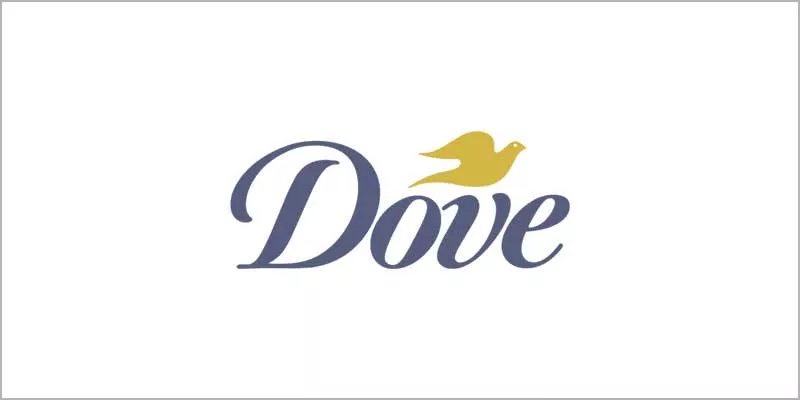
Dove, (a Unilever brand) is most certainly a power player when it comes to brand purpose and have taken up a cause that resonates with their audience on many different levels.
Their purposeful endeavours centre on an issue that their brand has now become synonymous with, “Self-Esteem”.
Not only have they taken on the challenge to increase the self-esteem of women today, they have gone further than that through their Self-Esteem Project as they attempt to help women address the problem through educating their daughters.
Dove has taken on a noble cause with Authenticity at its core and their execution and communication of their purpose is a lesson in itself.
The Dove Of The Day Didn’t Speak To Emotion
At the turn of the century, Dove were running campaigns that were solely focused on their product. It was all about features and benefits and waving it’s product differentiation flag when compared to soap.
In fairness to them, they differentiated well and “Its Not A Soap” tag they used, performed well in the Soap aisle.
Though this was a features and benefits play, not an emotional one.

In 2004 however, they launched an ingenious campaign that struck an extremely delicate and relevant chord with women around the world and in doing so changed the course of the brand and the branding industry.
Back then, when a fresh faced Zuckaberg was bashing together the early code of what would become Facebook, advertising was still very much through traditional channels and the content was very, let’s say, traditional.
Dove’s industry especially (cosmetics and toiletries) used skinny porcelain looking models generously in their advertising.
Not only did they have little resemblance to the everyday woman, they fuelled the idea (in men and women) that this is how women should look.
Victoria’s Secret still thought this strategy was a good idea in 2014 with this ad.
The market was pretty clear that they don’t put up with that sh*t anymore.

When Dove released their 2004 campaign which featured six curvy women in the first of a “Real Beauty” theme, the sigh of relief from women around the world was audible.

Dove’s disruptive campaign and the overwhelmingly positive response from the public and the tabloid press shone a light on an issue that resonated strongly with women and girls around the world.
Self-esteem.
Dove landed on an issue that women around the world wanted someone to address and so, Dove became the voice of Self-Esteem.
In 2013, Unilever’s agency, Ogilvy & Mather, cleverly took women’s insecurities and put them into visual form, telling women “you are more beautiful than you think”, prompting an emotional reaction.
The video went viral and clocked 35 million youtube views in two weeks.
A more recent addition pulled self-esteem into focus once more, when they set up sets of two doors labeled “Average” and “Beautiful” and documented as women made their choices driving home that beauty is a state of mind.
Dove’s sales in the 10 years following their change in brand communication in 2004, jumped from less than US$2.5 billion to more than US$4 billion.
A few hundred million more than that by now one would guess.
As Jim Stengel, former Global Marketing Officer of Procter & Gamble put it,
“You can innovate against that purpose indefinitely. I don’t know when it will ever be out of date.”
But that is the point.
It won’t ever be out of date as it will always remain a challenge.
Dove will continue to fight the fight of self-esteem issues within women and encourage women to feel more beautiful inside and out.
As they impact women’s lives, they improve society, grow their brand, and increase brand loyalty.
Brand Purpose, it would seem, is working for Dove.
Chapter 4
Measuring The Impact Of Purpose
Though Brand Purpose is still viewd by many as a marketing ploy to push more products or services and fatten up that bottom-line, the impact being made by brands is real.
This list of causes that have benefited from brand-driven initiatives is growing and include:
- Environment
- Races
- Sexes
- Genders
- Individuals
- Groups
- Countries and
- Continents
As more brands take up arms against something their customers believe in, the impact grows.

How Brand Purpose Is Being Measured
Along with measuring the effectiveness of purpose on brand performance, more organization are measuring the actual impact purposeful efforts are making on the world.
Radley Yeldar is one such organisation.
They rank the top 100 purposeful brands in their “Fit For Purpose Index” which measures 180 brands from the PwC 100 and the FTSE Eurofirst 100.
Here’s how they see purpose:
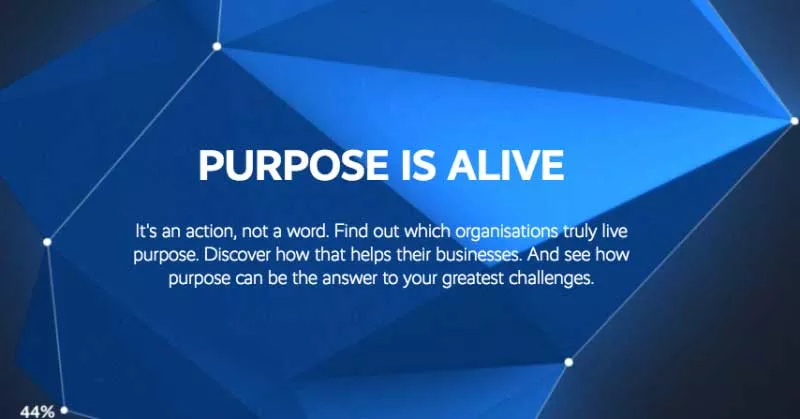
They believe that;
“While it is important to have the right purpose in place, it’s just as important to put it into action.”
They assess and measure brands based on six criteria:

Purpose and Story:
They looked at the brand’s story and purpose and asked;
- Whether the purpose clearly addresses a human or world need.
- How purpose is used within the brand story.
- Whether the purpose is authentic and visionary.
How They Communicate:
They looked at every communication channel that the brand uses to engage their audience and create a movement and asked:
- Whether purpose is clear within brand campaigns.
- How prominent purpose is across the digital experience.
- The extent to which purpose is apparent in company reports.
How They Perform:
They look at whether or not the purpose is at the heart of the business, setting ambitions and monitoring progress including:
- How deeply purpose is integrated into the business model and business strategy.
- Whether there are clear targets and performance indicators connected to the purpose.
- The extent to which purpose is ingrained within the brand’s approach to sustainability.
How They Behave:
They analyse if employees are engaged and keenly contribute to the achievement of purpose-related goals, reviewing:
- Whether leadership champions purpose.
- How purpose is integrated into the employee experience.
- Whether the brand has purpose-related partnerships.
Here’s how they’ve ranked the top six. You can check out the full list here.
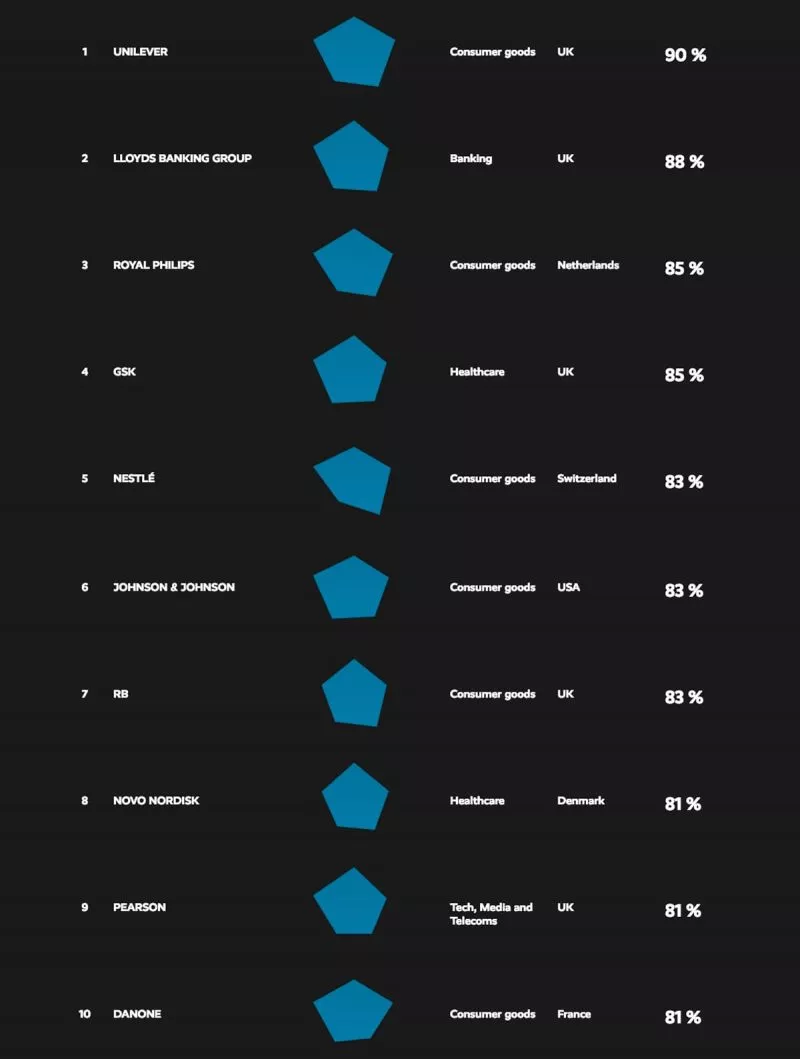
What’s The Actual End Goal of Purpose?
Well, let’s not make this awkward and get the obvious out of the way.

The indirect end goal of purpose for brands is to be a more attractive option for their audience in order to grow the business.
Now, when defining purpose, you need to look at the role of your brand “aside from commercial interest”.
That said, a business doesn’t stop being a business because there is a grand endeavour at play.
When you strip it back, you can’t get away from that end goal.
Even a business that has authenticity at the core, would not be able to pursue a noble cause if it didn’t contribute positively to the growth of the business.
Of course the purpose in itself has its own goals and organisations everywhere are helping to change the world for the better.

The idea of purposeful businesses came on the back of brands listening to what audiences wanted and being proactive in siding with their points of view.
Do businesses genuinely care about the positive impact they make in the world? Absolutely they do.
Business leaders and the people within a business are still people with their own families who want a better world for them to live in.
Will more businesses actually change direction to become a different kind of business based on their purpose? I believe so.
Would businesses still be pursuing purposeful ambitions at the cost of the business if it had absolutely zero impact on their audience, the health of their business or their standing as a brand? Definitely not.
Of course there may be some purposeful individuals behind businesses allocating some profits with zero expected benefits other than to give.
Look at what Bill Gates and Warren Buffett have created for such individuals being encouraged to give back.
But there would be far fewer businesses involved when compared to the purposeful revolution we are currently in.
Let’s go back to the fundamentals of capitalist business for a second.
A business lives and breathes with priority #1 as it’s main focus. That is profitability.
Without that at the core, then a business is not a business but a charity or a not-for-profit.

A Brand Must Answer To Business Principals
Therefore, a business and it’s business leaders, must always act in the best interest in the company whether it’s appealing to their audience, improving the health of the business or its standing as a brand.
So that is the cornerstone of the focus of brand purpose.
But once you get that out of the way, you’ll see there’s there’s more to it.
When we move past the elephant in the room, we can see the actual impact organisations are making in the world.

When we put the commercial interest aside, the purpose becomes a lot more pleasant to look at.
Purpose-driven brands are:
- Inspiring innovation and positive change,
- Providing employees with a sense of meaning and fulfillment,
- Creating value for the customer,
- Impacting communities and
- Improving the health of our planet and society for the benefit of our future and future generations.
So the end goal of the purpose primarily is to grow the brand.
But the by-product of successful purpose-driven brands is changing for the better.
The way I see it, that’s moving forward.
Why Leaders Fear Brand Purpose
Although purpose is gaining traction, it’s a slow burn.
Despite the fact that 85% of the 474 executives interviewed by HBR said they are more likely to recommend a company with a strong purpose, only 47% believe the organisation they work for don’t actually have one.
This stat suggests that:
Over a third of executives believe their company should be more purpose driven than they are.
Brand purpose, in the mainstream business world, it is still relatively new.
That said; far more businesses are either focused on purpose, are planning purposeful activities or are aware that purpose is “now a thing” that they need to be considering.
When it comes to change, many business leaders are stuck between a rock and a hard place.

That is; shareholders and customers.
Get it wrong and you risk the wrath of both.
The pressure that comes from shareholders for their return on investors is enough to give any CEO a rash.
In boardrooms all over the world, many view the idea of “purpose” with contempt and takes a brave individual to propose such a dirty word.

Walking the purpose plank has not ended well for some.
This might explain the general sentiment from those seeking change within businesses; that communication from leadership on the topic is either filtered, slow or completely absent.
For other businesses, logistical problems arise such as systems and infrastructure that are not aligned with long-term purpose.
If you were to speak with 100 non-purpose driven business leaders, you would likely get 100 different reasons as to why purpose is not a priority.
Throughout the world, businesses are led by business leaders whose sole focus is on the bottom line with anything else representing an obstacle to be negotiated.
Some will negotiate purpose for as long as possible.
How The Millennial Influenced Purpose
“The Millennial”, a now infamous term, is the segment of consumers born between the mid eighties and mid nineties.

They were children or young teens when the mobile phone broke free from it’s brick-like corporate image and quickly landed in their hands with customisable colours and ringtones.
Nokia and Motorolla, not Apple, were the dominant forces in the telco space.

This was at a time when the internet was beginning to grow legs and personal computers were making their way into every family home.
It wasn’t long before the questions that were being hammered into Alta Vista were going into Google and every question they could ask was immediately being answered.
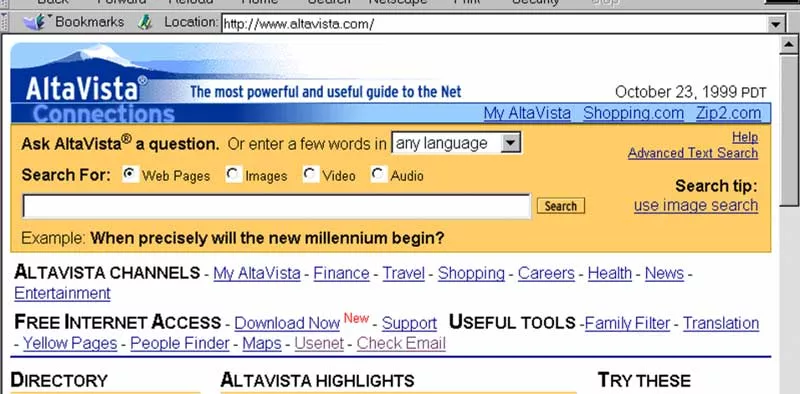
This was a very important time in modern history and as the Millennial has grown, so has the market.
The “I want it now” generation got what they wanted, and continue to do so.
When social media came along, they were ready for it.
Heading towards their 20’s they were well versed in online conversation and the perfect platform had finally arrived.

Open comments on shared causes grew conversations and the power in numbers grew.
The wider media began to look to social platforms as a pulse on the social mood for topical issues and the voice of the people became the story.

With this newfound power, individuals and groups began to take on the ethics and actions of larger organisations, which drew even more media attention.
In 2010, consumers took on global giant Nestle for using palm oil in their products.
Consumers took to social media, Greenpeace took up the fight and together they laid down a sustained attack.
Nestle bowed out of the fight with a bloody nose and a damaged reputation.
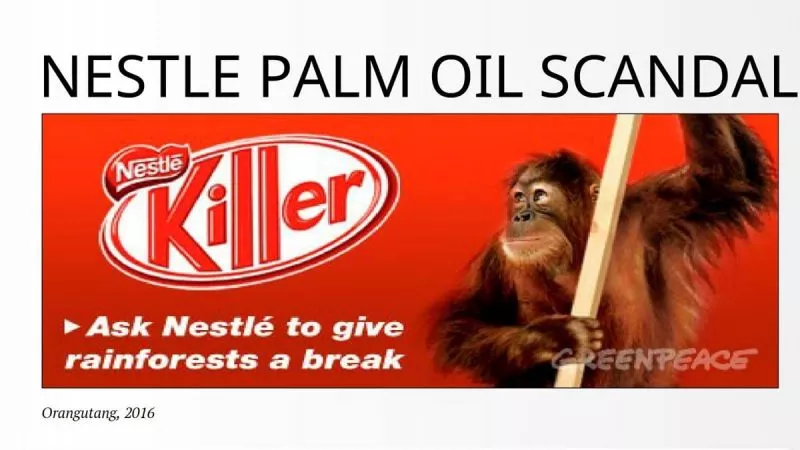
Millennials have set about righting what they see as the wrongs in the world through conversation and accountability of authorities and businesses.
Issues including:
- Racism
- Sexism
- Gender Inequality
- Same-Sex Marriage
- Pollution
- Global Warming
- Sustainability
- Clean Energy
are all causes that millennials hold dear and their conversations have changed the behaviours of modern business.

Millennial’s have been game changers in people power and have set the tone for generations to come.
How Purpose Influences Brand Culture
The demands of today’s generation of workers has brought the importance of brand culture into focus.
We spend more time with our colleagues than we do with our families so a strong culture not only has a positive impact on your work but on your mental health.
If you work in an environment where people are generally unhappy with their working conditions, pay, leadership, and communication then there will be a negative mood throughout the business.
Negative moods are infectious and if you’re around them everyday, they can wear you down.
If you recognise this environment it’s not surprising, because it used to be the status quo in the corporate world.
But this is the age of the millennial.
And as we know… if they don’t like something…
When people love the work they do, the meaning behind it and the people they work with, it oozes from every employee and every touch point the business has with its customers.
This is why the modern employee values culture above all else.
It also directly impacts the bottom line with
- Less Turnover
- Higher Loyalty and
- Greater Productivity
In fact, research has shown companies “with performance-enhancing cultures” increased an average of 901%, while shares in companies “without performance-enhancing cultures” rose just 74% over the same period.
5 Examples Of Winning Company Culture
When our work is meaningful to us, we do better work and we’re happier. This then comes across in the way we perform our work.
Just ask Zappos customer service agent who holds the world record for the longest customers service call at 10 hours and 43 minutes.
He works for a company that has a true sense of purpose that filters down into their happy staff.
Now I know what your thinking…. Was the follow up dinner also part of the customer service?
The new self-conscious purpose driven generations of today are not just the dominant market, they are also the dominant workforce.
Brands that offer meaning to the work they are proposing now, have a decent hand at the talent acquisition table.
Chapter 5
Best Brand Purpose Examples [And Worst]
Just like anything, there are those that do something not so well.
Then there are others who completely fudge things up.
In this chapter, we’re gonna look at the very best and very worst examples of purpose that brands have offered up.
It becomes clear pretty quickly, which brands have authenticity at the core and which brands have tacked on purpose as an afterthought.
It also explains why there are passionate advocates and passionate opponents of purpose.
![Chapter 5 Best Brand Purpose Examples [And Worst]](https://brandmasteracademy.com/wp-content/uploads/2019/11/Chapter-5-Best-Brand-Purpose-Examples-And-Worst.webp)
Best Brand Purpose Examples
Warby Parker
Warby Parker broke into the market as a disruptive startup in 2010.
Their purpose was simple.
To make eyewear more affordable.
Purpose Statement:
“To offer designer eyewear at a revolutionary price, while leading the way for socially conscious businesses.”
Now, it could have been a case of entrepreneurs finding an opportunity and trying to undercut the market and bolting on a purpose, however, their follow through has shown their authenticity.
One of the founders previously ran an eyewear non-profit where he was creating glasses for people who lived on $4 a day and wondered why glasses in the west cost so much in the west.
The story is really interesting – you can check it out here.
In summary, they found that one giant company, “Luxottica” either owned or had exclusive licensing deals with nearly all major eyewear brands (Ray-Bans, Oakley, Raplh Lauren, Versace) and so, they set the market price.
This drove their idea even more and became the impetus for Warby Parker to create more affordable eyewear.
As Dave Gilboa, one of the founders put it:
“Glasses simply shouldn’t cost that much”.

Since their dramatic launch where they went from not even having a website to having sold their yearly target in 3 weeks, Warby has gone from strength to strength and were valued at $1.75 billion prior to listing.
Along with making glasses more affordable for everyone, they took their non-profit expertise and expanded their purpose to give back.

They identified that out of the 2.5 billion in the world that need, but don’t have access to glasses, 624 million of them cannot effectively learn or work due to the severity of their problem.
Warby has set about making an impact on that number and have since distributed 4 million pairs of glasses through their program.
Bravo Warby.
We can see your vision now ;)
Libresse (Bodyform)
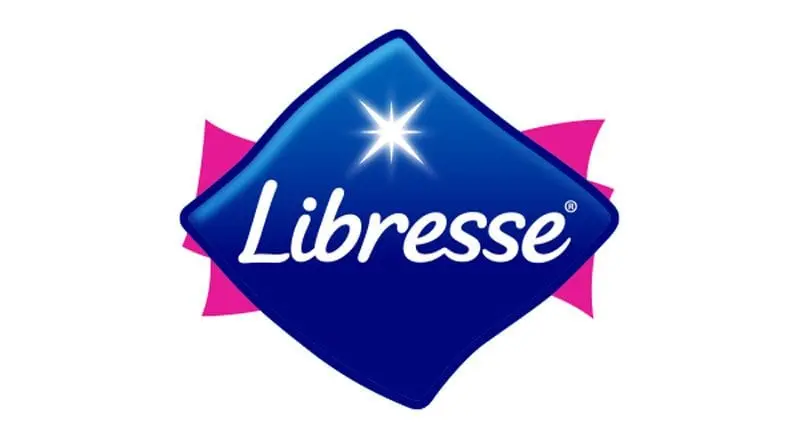
Bodyform have been breaking stereotypical norms since the 80’s producing ads with women jumping out of planes, boxing, climbing mountains and donning swords from horseback.
Purpose Statement:
“Breaking taboos that hold women back”
In a more recent ad however they’ve gone one further in a celebrated attempt to break the taboo of showing period blood.
It was a big risk given (as they outlined in their ad) “The sight of period blood is unacceptable, as deemed by TV broadcast authorities worldwide. “
Not only was this ad accepted, it was celebrated with the ad winning the Cannes Grand-Prix Award.
Would this ad have been celebrated, embraced or even accepted 10 years ago? Certainly not.
But as Bob Dylan once said; “The times they are a-changin”
The Body Shop
Purpose Statement:
“To become the world’s most ethical and truly sustainable business.”
The Body Shop has been around since 1976 and have always had a sense of activism about them, though their purpose has become a key focus in recent years with the introduction of their Enrich Not Exploit commitment.
The Body Shop was acquired by L’Oreal in 2006 and they never quite gelled with the head of CSR Terr Slevin Saying;
“It was a strain on many people in The Body Shop … The Body Shop over the past 10 years hasn’t had the freedom to express what is still alive in the Body Shop, the human activist spirit and purpose-led philosophy.”
In 2017 the company was sold to Natura in what seems to be a perfect match with Slavin saying
“I joined under Anita [Roddick] over 14 years ago, and I have seen a lot of changes, but genuinely, I haven’t seen or felt the place generating that amount of joy and excitement as today. It feels great,”
Now, the company seems more focussed than ever on making an ethical impact.
The company doesn’t want to just change the ingredients of their products, they want to make a big impact on society by enriching their people, products and the planet.
Not only have they set themselves big goals, they’re making themselves accountable by publicly sharing them, and boy… are some of them ambitious.
The Body Shop are not just talking about the next four years, they’re planning for the next 40.
Patagonia
Purpose Statement:
Build the best product, cause no unnecessary harm, use business to inspire and implement solutions to the environmental crisis.
The company’s commitment to the environment includes
- A switch to 100% organically grown and ethically sourced cotton,
- Annual environmental educational events,
- Support of grassroots environmental efforts,
- Reducing corporate waste and pollution, and, most recently…
- Suing the government over the decision to reduce National Parks land in Utah.
Patagonia know their customers are adventurers, who love the outdoors, love nature and love the environment.
Their purpose is aligned with the beliefs of their customers which is why they have focused so much attention on sustainability and the environment across their business.
Axe / Lynx

Purpose Statement:
“To help guys celebrate their individuality and be as attractive as they can be,”
Speaking on the brands purposeful evolution, global vice president Rik Strubel said;
“The brand was at a stage where it was time for a change. This is a brand that wants to reflect the way men see themselves. We need to be progressive and provocative, so we felt it was time to review our brand purpose.”
Axe discovered that 72% of guys have been told how a real man should behave which has lead to countless web searches asking the question “is it ok for guys to…”
They reassured their audience and encouraged guys to be themselves which tied into their “find your Magic” campaign.
Other Brands Winning With Purpose
Diff Eyewear
Everlane
Bombas
TOMS Shoes
Causebox
Cotopaxi
Worst Brand Purpose Examples
Our earlier example of Pepsi missing the mark by trivialising the Black Lives Matter movement was probably the most high profile example of a brand lacking authenticity in an attempt to portray purposeful action.
But Pepsi aren’t the only ones falling short.
There are plenty more which continue to feed into the widespread distrust of brands.
Kurl-On Mattresses India
Ok, so the brand might not be a household name in the west, but in India they’re a pretty big deal.
The surprising element in this example is the agency behind it. Ogilvy.
In 2012, a 12-year old Pakistani girl you had never heard of “Malala Yousafzai”, was shot in the head on her school bus by the Taliban, for speaking out in favour of women’s education.
She recovered and became an internationally famous activist, winning the Nobel Peace Prize that year.
Ogilvy, released a series of ands with a campaign focus on “Bouncing Back” which included both Steve Jobs, and Muhatma Ghandi.

In each ad, a caricature of the subject is shown falling in their adversity, to bounce right back from a Kurl-On Mattress to their global successes.
You can get the positive and purposeful idea behind the campaign.
In the case of Malala however, the cartoon actually shows an AK47 pointed at the girls head with blood spurting from the wound.

I mean, we’re all for businesses selling mattresses if that’s their gig.
But leveraging a 14-year-old schoolgirl that was shot in the head by terrorists to do so?
This ad has to be the ultimate trivialization of a horrific event.
Judging by the Ogilvy top brass, they were just as horrified.
“The recent Kurl-On Mattress ads from our India office are contrary to the beliefs and professional standards of Ogilvy & Mather and our clients. We deeply regret this incident and want to apologise to Malala Yousafzai and her family.
We are investigating how our standards were compromised in this case and will take whatever corrective action is necessary. In addition, we have launched a thorough review of our approval and oversight processes across our global network to help ensure that our standards are never compromised again.”
Hopefully the creative team had a Kurl-on mattress to retreat to when contemplating their next career moves.
Starbucks
Starbucks have been one of the pioneers of brand purpose with substance.
Purpose Statement:
To inspire and nurture the human spirit – one person, one cup and one neighborhood at a time.
They champion sustainability, fair trade and farmer equity practices.
More recently set up a program with Feeding America to donate 100% of unsold food from its 7,600 U.S. stores to local food banks and pantries.
At a sensitive time where racial protests dominating the U.S. headlines in the wake of the grand jury decision in Ferguson, Missouri, not to indict the police officer who killed Michael Brown, Starbucks launched “Race Together” campaign.
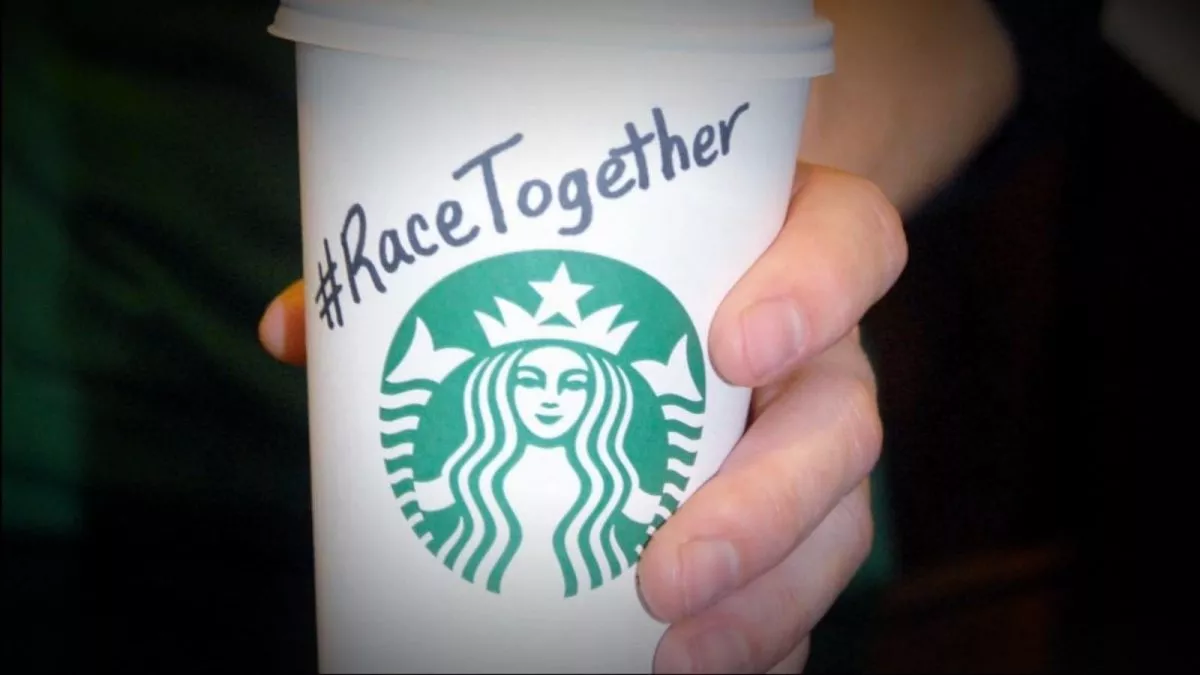
It’s purpose was to “stimulate conversation, compassion and action around race in America”.
The plan was to invite the baristas in store to write “#Race Together” on coffee cups and hopefully generate some genuine conversation throughout the community.
Starbucks’ head of communications was forced to temporarily suspend his Twitter account following a barrage of attacks, which only further frustrated critics, and some people blasted the company for weighing in on race at all when only two of its 19 executives are black.

Many people questioned how the idea could have ever gotten past the board room at a Fortune 500 company. Apparently, this one came directly from Mr Starbucks himself, CEO Howard Schultz.
Brand purpose is a double-edged sword.
The topics on what you do or do not have permission to weigh in on is the publics to give and take.
If there is any possibility of being called out for double standards, inauthenticity or just a lack of an association, think twice before weighing in.
Coopers Australia
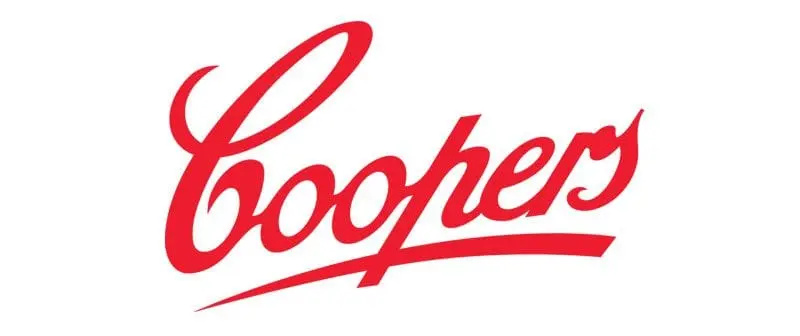
In a bizarre joint venture, the Coopers brewing company and The Bible Society Australia, joined forces.

Coopers teamed up with the Bible Society Australia, launching commemorative Coopers light beer to celebrate the 200 year anniversary which it has supported financially for years.
The Bible Society in turn launched the “Keeping It Light” campaign, which was set to be a series of videos in which public figures discuss controversial topics over a commemorative Coopers light beer.
Australian politicians Tim Wilson and Andrew Hastie were the first guests to “keep it light” by discussing the same-sex marriage debate.
However, the public backlash started within minutes of the video’s release and Social media users took to the Coopers’ Facebook page, promising to never drink the beer again and a nationwide boycott ensued.
Pubs switched off Coopers taps throughout the country.
The Union Hotel in Newtown, Sydney said they would donate money from the sale of their last remaining Coopers kegs to Beyond Blue before posting on facebook;
“We’re huge fans of the beer, but nothing short of genuine public support from Coopers for marriage equality would get us back to pouring their good stuff,”
And that’s exactly what happened.
The Coopers leadership fronted the camera with a sad apology and a statement of their full support of same sex marriage.
This example wasn’t a typical brand fail but a brand caught up in a scandal of one of their partners.
But as is the well-trodden path for modem brands, an apology was the only option.
McDonald’s
McDonald’s have had a few near misses in recent times including their extremely awkward “Pay with lovin’” campaign.
But their latest ad promoting their fillet-o-fish sandwich drew tough criticism with viewers deeming it “offensive,” “exploitative” and “cynical.”
From a brand that has traditionally aligned itself with good times and happiness, this campaign was left of centre as it seemingly looked to exploit childhood grief to see sandwiches.
The Ad, by well-respected agency Leo Burnett London, focuses in on a boy who lost his father when he was a baby (It’s assumed) as he appears to have no memories of him.
As he asks his mum questions about his dad, she describes him fondly in great detail.
It soon becomes clear that the boy isn’t much like his dad at all….except for the fact that…wait for it… he loved a good old fillet-o-fish.
Way, way off the mark Macca’s.
I’m quite confident there is now at least one boy in the world who gets upset at the idea of a fillet-O-Fish.
If they have plans to create a Sad Meal to go alongside the Happy Meal, then the Fillet-O-Fish is their first filler.
Let’s keep it fun and fluffy in future eh?
JPMorgan

Ok first off. I know what your thinking.
You need a higher purpose in the first place in order to mess it up right?
Correct. But this one just demonstrates how some brands are so eager to jump on “the greater good bandwagon” that they’re prepared brush their self-awareness in the marketplace right under the carpet.

Their marketing team thought it was a good idea to take to twitter to generate conversation and give would be employees the opportunity to ask a JP Morgan executive career related questions.
In the end they got plenty of questions, just not those they had hoped for.
Here are some of the less nasty tweets.
“Did you always want to be part of a vast, corrupt criminal enterprise or did you “break bad”?”;
“Did you have a specific number of people’s lives you needed to ruin before you considered your business model a success?”;
“What section of the poor & disenfranchised have you yet to exploit for profit, & how are you working to address that?”;
“Why aren’t you in jail for sending a literal ton of gold bullion to Iran in violation of sanctions?”;
“When Jamie Dimon eats babies are they served rare? I understand anything above medium-rare is considered gauche.”
How Timing Shapes Perception
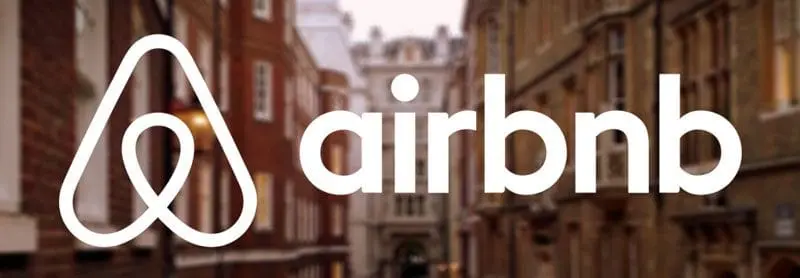
As you have seen from these examples, purpose is a double-edged sword and it only works if it is coupled with authenticity.
Even if a brand is 100% authentic in their efforts, execution and timing are important factors.
Airbnb’s floating house marketing stunt would have been fine. It’s nice and light with some feel-good music.

On the face of it, a good job right?
The problem was, that one of the most destructive storms in American History, Hurricane Harvey, had just hit Houston.

The campaign went out via email which included headlines like:
“How to spend a day – or an entire trip – without touching dry land,”
and
“Stay above the water: live the life aquatic with these floating homes.”
Ouch!
In their defense, it was set up before the hurricane and went out as part of an automated campaign.
Still though. someone, somewhere probably could have stopped the automation.
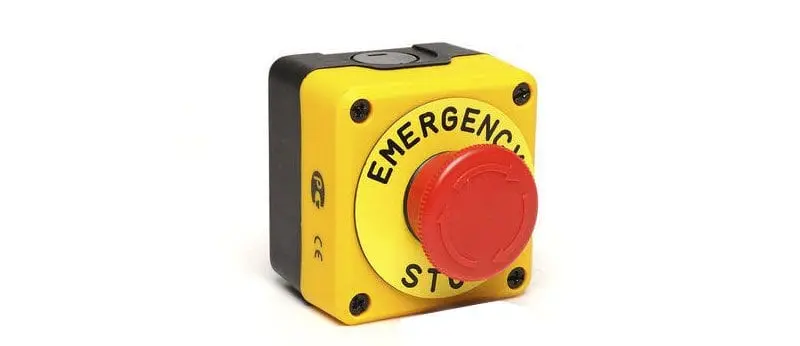
Even if your authenticity is there, your timing is right and your execution is spot on…
If the public decides you have no business weighing in on a topic, then it is their call to make.
So purpose, as you can see, can be a bit of a minefield though the number one prerequisite for taking up a sensitive issue is authenticity.
Without it, your just another business trying to leverage an issue that people are emotionally attached to, for commercial benefit.
So before you begin “playing” with the idea of purpose, do your research and avoid a public backlash.
Brand Purpose Example
[INFOGRAPHIC]
[pdf-embedder url="http://brandmasteracademy.com/wp-content/uploads/2019/11/Brand-Purpose-Infographic-Brand-Master-Academy.pdf"]
Chapter 6
Brand Purpose Strategy Considerations
The upside potential of an effective purpose strategy is immeasurable.
But this is a high stakes game where the wrong move can land a brand in hot water and damage its reputation
- Authenticity
- Context
- Timing
- Execution
These are just some of the considerations that can make or break your strategy.
In this chapter we’re gonna take a look at the pitfalls of brand purpose and how to avoid them.

Purpose Natives v Purpose Immigrants
Some brands were born from a purpose (purpose natives).
Some adopted a purpose after their inception (purpose immigrants).
Older, more established brands were around long before purpose was an important strategic consideration while more modern brands are built with the purpose as part of the foundation.
Let’s take a closer look at both.
The Purpose Immigrants
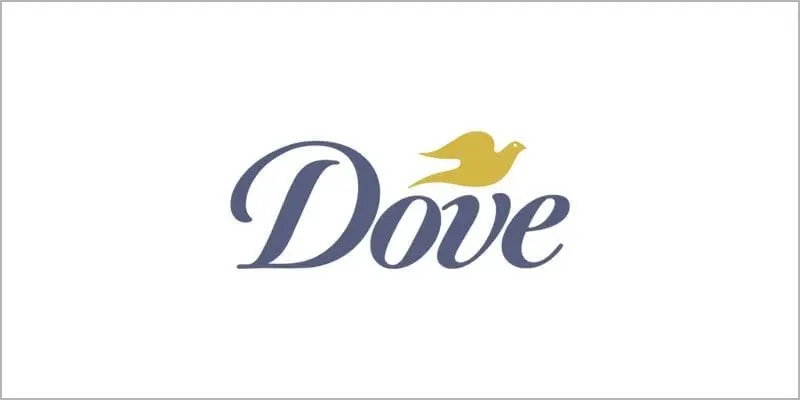
When brands first began adopting purposeful causes, it was new to them.
They weren’t always following a purposeful ethos and so, they needed to develop one.
Such brands tend to look to the problem their brand solves, their founders’ beliefs and the beliefs of their audience.
They look for a common purposeful thread that they can integrate into their brand.
These brands that adopt a purposeful cause after their inception are known as purpose immigrants.
A perfect example of such a brand is Dove.
Although Dove differentiated itself from other soap and the cosmetic industry, they didn’t communicate a brand purpose.
Plenty of research into who their audience was and an alignment of the problem they solved brought about the birth of their purpose of “self-esteem”.
The Purpose Natives

When startups are formed today, part of the process is often looking at who their audience is, what their concerned about in the social or environmental world and where the brand fits into that concern.
In other words, how can they help address a problem their audience is concerned about?
Brands such as TOM’s, Warby Parker or The Body Shop are born with a purpose.
It is a part of their brand DNA from inception and if backed with authenticity, usually from the founders and their beliefs, it is far easier to believe and buy in to.
These brands are known as purpose natives.
Their purpose is part of the identity of the brand and forms part of its reputation.
Although such brands are still in the minority, they will become the overwhelming majority in years to come.
How To Use Context Effectively
Brands cannot simply choose any given purpose and pursue the cause.
The purpose it pursues must fall in line with the nature of the brand, the product they offer and the audience they want to attract.
Context is important if part of the overall goal is to influence a buying decision.
A purposeful cause therefore, cannot be viewed in a silo.
Lets take an environmental purpose in the way of “organic ingredients” as an example.
If it appears on a packet of coffee, the audience might associate the organic ingredients with better quality, taste or health benefits.

If it appears on cleaning products however, it may be associated with reduced effectiveness.
A belief might be authentic but that doesn’t mean it fits the context.
Likewise, when Starbucks decided that they wanted to join the conversation about racial equality, the context simply wasn’t there for the public.
Few would argue that open discussions on such topics advance the situation, but Starbucks didn’t have that permission.
To weigh up the associations your audience may have with a considered purpose, ask the following questions:
Is the cause or issue likely to be perceived as relevant to our target audience?
Is there an obvious connection or association with the cause and our brand?
Will the purpose strategy generate positive associations about the brand?
Is it possible that a section of the audience or public may be offended by our stance? If so, who and why?
How To Identify Purpose Opponents
Regardless of the cause a brand might look to tackle, most causes have both advocates and opponents.
If your audience consists of both in numbers then tread lightly.
The last thing you want to do is to ignite heated debate on the topic between your customers on which you have already taken a side.
You also have advocates who are so passionate, they defend the cause by questioning authenticity of brands that raise the issue.
Traditionally, there are three main drivers of negative reactions:
Hypocrisy (inconsistency between claim and action)
Politicization of the claim
Suspicion of inauthenticity
We have used both Dove and Lynx in examples above as brands that executed brand purpose well.
Although Dove had many advocates of their purpose-led branding, the detractors called hypocrisy due to the association with Lynx, both of which are owned by parent company Unilever.

Before Unilever repositioned Lynx to the purposeful brand it is today, their ads featured the seduction of semi-naked girls.
This contradicted the message of self-esteem coming from Dove, which fanned the flames of hypocrisy.
Unilever reacted quickly and Lynx, along with many of their 400 brands are now driven by a greater purpose.
Best intentions are important when it comes to brand purpose but they are by no means enough.
Brands need to ensure than the likelihood of the purpose being accepted is as high as possible.
Here are three questions brand managers need to ask:
Will the brand make an impact they will later be able to demonstrate?
Are the key stakeholders closest to the cause, likely to support the actions of the brand?
Can the brand avoid hypocrisy through politicization, perception of inauthenticity and inconsistent communication?
Your Purpose Needs Commitment
Holding your customer’s hand in a shared belief for or against something they’re passionate about has huge potential for any brand that can pull it off.
But finding your brand purpose is not a miscellaneous question where you have a choice of a, b, c or d to choose from.
You need to dig deep into
- The roots of the brand,
- The motivations behind the leadership and
- The motivations, pain-points and beliefs of the people you serve.
Remember the doubters, detractors, distrusting millennials and GenZ’rs.
Their bullsh¨t radar is far too advanced for a half-baked purpose statement that is destined for a drawer in a dark corner.

If you are going to bother with brand purpose in the first place, it better be
- Authentic
- Relevant
- Contextual
- Actionable
Otherwise, you are feeding into the disbelievers and fanning the flames of distrust.
You also have a high chance of being called out on your plastic purpose.
What Is A Brand Purpose Statement?
As simple as that question is, the brand purpose statement is often a source of confusion.
The results of a simple Google search will show you that even industry authors aren’t all in agreement.
Mission, Values and Promise are all elements of a brands that get confused with the purpose.
Then there are taglines, slogans and vision statements to further muddy up the waters.
A purpose statement is a statement of intent to achieve a higher purpose goal.
In reality, unless a brand has a focused purpose strategy they tend not to have a purpose statement (even when they claim they do).
Whether a standalone statement or included within the vision or mission, a statement of purpose needs to answer the question:
“Aside from commercial interest, why do we do what we do?”.
If your statement doesn’t answer that question, it’s not a statement of purpose and shouldn’t be used as one.
Eg. Tesla’s mission statement is,
“To accelerate the world’s transition to sustainable energy.”
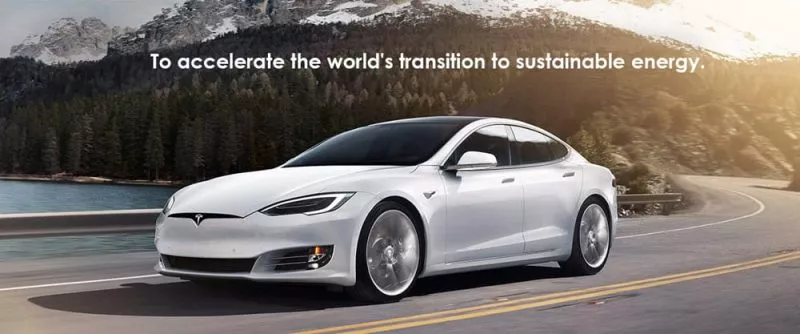
It outlines what they are committed to, but also the “why”, aside from commercial interest, they are committed to it.
If they realise their goal, they will have achieved a higher purpose beyond commercial intent. They will have advanced the human race.
American Express on the other hand runs with:
“We work hard every day to make American Express the world’s most respected service brand.”

Their statement doesn’t answer the question of “Why” and therefore is not a purpose statement.
If they achieve their goal, they will have advanced only the brand and their commercial interest.
There is no higher purpose at play.
Many brands run with such commitment based statements that they market as their “purpose”, without any “why” ever being addressed.
This is a large part of the reason there is so much confusion around “Brand Purpose Statements”.
Without a “Why” excluding commercial interest, your brand does not have a purpose statement.
Prioritise Execution
Its all well and good to draw up a fancy purpose statement that’s laced with a feel good factor and makes anyone reading it feel like they’re cuddled up in a bed of candy floss and fluffy puppies.
You might even frame it and dress it with glitter and feathers to warm your office space.

Without a solid execution strategy, your purpose will go no further than a good intention on a frame, reminding you of every goal you never met.
A purposeful brand needs a solid strategy and execution plan that should be:
- Tangible
- Measurable
- Reportable
Finding your why is the easy part.
Following through is where brand purpose suffers many casualties with many waiting in the wings to say
“You see, it’s all bullsh¨t”.
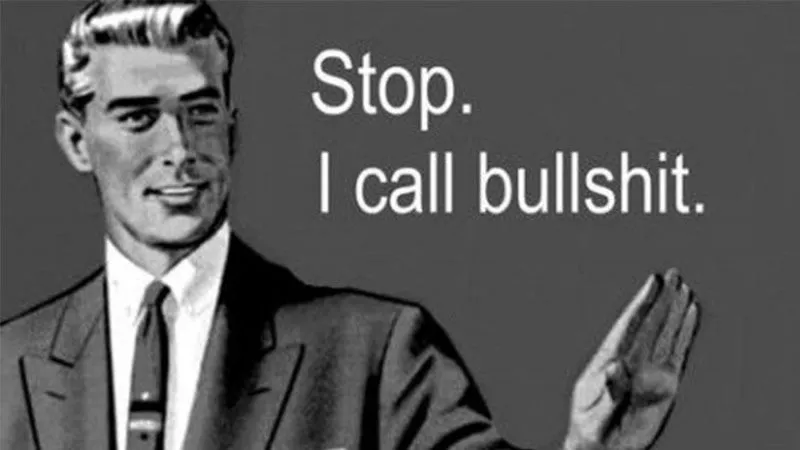
Chapter 7
How To Discover Your Brand Purpose
At the core of every effective purpose strategy is authenticity.
That’s why we talk about “finding your why” rather than “Choosing” or “Strategising” your why.
Along with the context, timing and execution of your strategy, there needs to be a meaningful reason behind why a brand pursues a cause.
This meaning is the “belief” that lies within the brand.
In this chapter we’ll look at why that belief must come from the top and how to go about finding it.

STEP 1:
Start Broad, Then Focus
Before you start with your Why, an even earlier starting point is to have an overall understanding of the major causes of the world.
This article from business insider outlines (from the horses mouth) where brands should be looking with the 10 most critical problems in the world according to millennial’s.
1. Climate Change (48.8%)
2. War (38.9%)
3. Inequality (30.8%)
4. Poverty (29.2%)
5. Religious Conflicts (23.9%)
6. Corruption & Government Accountability (22.7%)
7. Food & Water Security
8. Lack of Education (15.9%)
9. Safety / Security / Well-being (14.1%)
10. Unemployment (12.1%)
The UN’s 17 Sustainability goals give a wide berth when forming your considerations. Granted, these are pretty big goals and to make an impact on any one of these, you would need to be operating on a fortune 500 level.
I’ll play devils advocate, and assume you’re not operating at that level.
Each one of these Sustainability goals are broad and they shine a light on a topic from a broad perspective.
But within each broad cause, there are many smaller everyday causes that smaller businesses can help tackle.
Let’s take number 10 from the Millennial list:
10. Reduce inequality within and among countries.
Inequality is everywhere. It could be related to:
- Nationality
- Culture
- Wealth
- Race
- Sex
- Profession or
- Body shape
If your brand has a connection or association in some way, with people that suffer at the hands of inequality, then this might be a purpose worth investigating.
Having a broad understanding of the problems and concerns of the world, socially and environmentally is a perfect foundation.
Diving further into issues which you are better positioned to address, will give you a great starting point to uncover a purposeful cause for your brand.
STEP 2:
Start With Your Why
Going back to Simon Sinek’s earlier statement:
“People don’t buy what you do they buy why you do it”
We know where to start.
But we also now know that a purposeful “Why”, is simply not enough.
Many pieces of the puzzle need to align in order for a “Why” to be adopted and believed or an impact made, not least, a minimum viable business operation and an audience who want what you have.
But let’s assume all of those ducks are in a row.
You have something that people want and your brand can be competitive within that market.
Then, we can go back and “Start” with Why.
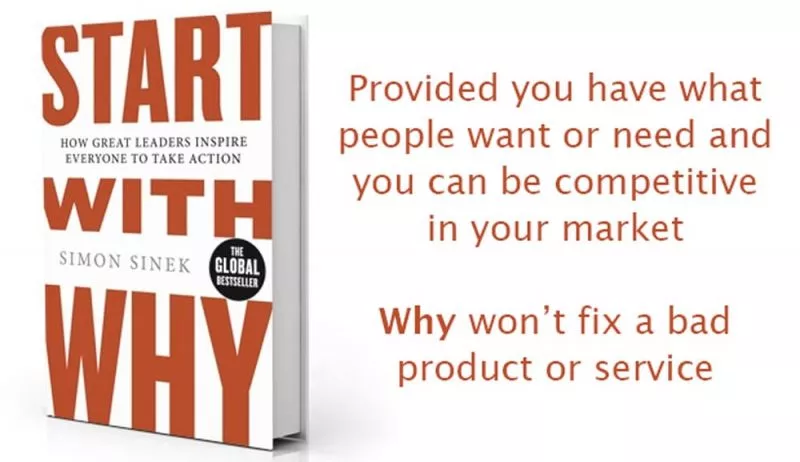
Defining the “Why” requires an alignment of two major stakeholders.
It must stem directly from the leadership and align all the way through the brand representatives, to the customer.
A marketing department passing a purpose up the food chain, to a numbers focussed C.E.O. as a great new marketing strategy, won’t have nearly as much chance of being adopted and believed, as a purpose coming from the founder(s).

Whoever is Starting with why, needs to sit atop of the food chain of the organisation.
They are the visionary and have the most influence.
At the very least, the leader needs to be “All In” on the idea and be involved at every step of the strategic development.
The purpose should have a personal association to the leadership and an emotional buy-in which will act as a believable driver that will trickle through the organisation.
When Starting with Why, ask these questions:
“Aside from commercial interest, Why do we do what we do?”.
Or to draw out more specifics:
“What positive impact can our business, products, service, communication or messaging contribute to, to make our society or environment a better place to live in?
STEP 3:
Find Your Customers’ Why
Aligning your brand to a cause because your family has been affected by it is not enough.
Without an alignment to who your audience is:
They’re not going to care and
You’ll get called out for not understanding who your audience is
Branding is about connecting with your audience and every decision should be based on who they are and what they want.
If you haven’t already developed a Buyer Persona, here is a great place to start.
There are plenty of articles and templates to show you how to create one.

As Hubspot puts it
“A buyer persona is a semi-fictional representation of your ideal customer based on market research and real data about your existing customers.
When creating your buyer persona(s), consider including customer demographics, behavior patterns, motivations, and goals. The more detailed you are, the better.”
The more you know your audience, the more you will understand who they are, what they believe and what causes are important to them.
If your audience are 28-32 year old females, it’s not enough to lump them into the “Millennial” category and assume that they want an environmentally friendly conscious brand to tackle the global warming problem.
Your customers are real people with real feelings and points of view on a variety of topics. The challenge for you is to find that common thread throughout your audience.
A great resource for learning more about your audience is Facebook.
Look for comments on the topics they care about to better understand where they sit.
From a detailed buyer persona and extensive digging in facebook, you should have a solid list of purposeful causes that your audience are concerned about.
STEP 4:
Clarify Your Why
Now you have looked at:
- Broad Issues
- Specific Causes
- Your own beliefs and
- The beliefs of your audience
it’s time to join the dots.
You need to know if you, your people and your audience are all on the same page.

Passing the “buy-in test” both internally and externally is the key to first, being believed and then, making a real impact.
Even though you’ve aligned your internal beliefs with your customers’ beliefs and cross referenced them with the issues of the world, your purpose shortlist needs to be stress tested.
Strategic Analysis
To ensure your purpose gets the buy-in from key stakeholders both internally and externally, ask these questions.
Does addressing this purpose contribute positively to our society either socially or environmentally?
What or who will benefit from combatting this cause?
Does our business have an obvious association or connection to this cause or those that may benefit by addressing it?
Has our audience demonstrated concern in relation to this cause?
Would our audience or the wider public agree that we are well positioned to address or discuss such a matter? (Remember Starbucks and the Race Together Campaign)
Do we have emotional buy-in and drive from the leadership team?
Will they provide the leadership to instil this purpose internally?
There are many elements at play that all need to align when it comes to brand purpose.
From the leadership to the ambassadors to the audience and the wider public, there must be an authentic, shared and believed interest in addressing the issue and all must agree that your brand can help to advance the cause.
Chapter 8
How To Execute Your Brand Purpose Strategy
In this chapter we’re gonna take a look at the techniques and processes you can follow to integrate purpose effectively into your brand strategy.
As you’ve seen, there are more considerations to a brand purpose than simply tacking on alignment to a sensitive issue.
The key with any form of branding is intimately knowing who you’re trying to connect with and how they feel as a group.
Execution is everything but if you pull it off, you can enter a unique place in the heart of your audience where your competitors won’t be able follow.

STEP 1:
Make Your Purpose Actionable
When you know the cause you want to pursue, you need to identify how your brand can contribute to that cause.
Understanding the existing initiatives in place to combat this cause is a great start as it gives you an idea of what you can do, what’s already being done or who you may join forces with in the fight.
When you know what you want to tackle – a simple Google will help you get a great understanding of the broad issue.

If you want to make a big impact, look for gaps or new initiatives that that can tackle the issue from a different angle.
EXAMPLE:
Dove initially began the self-esteem project by talking issues of self-esteem directly with the women they wanted to impact.
As the project has developed, they have developed new initiatives; including tackling self-esteem at the source, encouraging women to talk to their daughters with the goal of making self-esteem part of their education.
Dove attempts to tackle their cause as the source.
How can you apply that thinking to your purpose?
Define Your Purposeful Action Plan
- What are you going to do?
- How are you going to do it?
- What resources will you use? product, funds, time, skills etc?
- Will you highlight the cause with education, studies or conversation?
- Will your actions be physical, digital or a combination?
Once an action plan is in place, goals should be mapped to those actions with targets set out in writing.
- What goals do we want to achieve?
- When do we want to achieve them by?
- How will we measure them?
Going further, a brand can communicate these targets to the wider public and produce regular reports documenting their progress, just like The Body Shop did with their purposeful goals.
This is a scary step but makes the brand accountable.
Are you up for the public challenge?
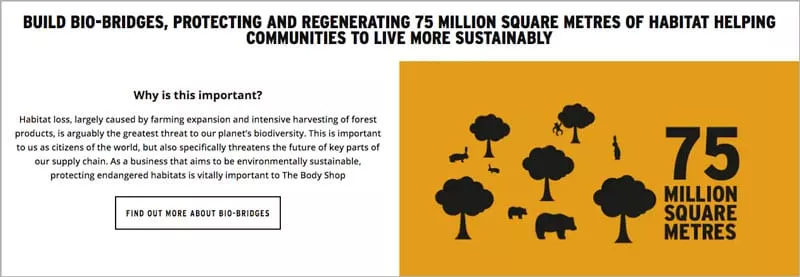
Strategic Analysis:
Is Your Purpose Actionable and Accountable
To ensure your purpose has more substance than a printed statement, make it actionable and follow through with accountability.
Analyse existing initiatives in relation to the cause you want to tackle.
Identify organisations you can align with or new initiatives you would like to create.
Create an action plan of exactly how your organisation can contribute to helping to fight this cause.
Map goals to each of the actions your brand aims to achieve with short, medium and long-term goals and a calendar of analysis and reporting.
STEP 2:
Write Your Brand Purpose Statement
As we covered before, your brand purpose statement needs to answer the question:
“Aside from commercial interest, why do we do what we do?”
There are many statements that brands supposedly need, so if you want to streamline these, you can double it up as your mission statement, provided that it also answers the question;
“What are we committed to in order to achieve our vision for the future”.
“Your brand purpose statement needs to be exactly 167 characters long” …is not the kind of direction you’re going to get. This is because branding and communication not SEO.
But here are some points to remember:
It’s a statement not a story
It can double up as other statements as long as it answers the question of “Why, aside from commercial interest”.
It should be memorable enough for your internal brand ambassadors (your staff) to remember. If they remember it the can live by it.
It should inspire all key stakeholders from the leadership team to the wider public.
It should have the cause at the core.
Remember, first and foremost, this statement is internal and should inspire purposeful action.
It may or may not be promoted externally, but that is not its primary role, inspiring action is.
The effectiveness of the statement can be measured in the action taken.
STEP 3:
Write Your Story
If as a brand, you hold a belief, then there is a reason you hold that belief and that reason is your story.
Often this story stems from the experience (individual or collective) of the leadership team, but finding that story and telling it cemeents the orogin behin your why.
Brand storytelling is a profession in and of itself so this can be a big as you want it to be or simply tell the tale of why this is important.
The trick is to tell a captivating story, and slip your brand into the overall message.
Here are some great brand storytelling examples.
Not all purpose related, but inspirational nonetheless.
I’m man enough to say this one tugged at my heartstrings.
You may not have a million dollar budget, though good storytelling is not necessarily about big budgets.
If you have a phone and some simple apps, you can tell a great story with the right creativity.
This video give you some insight as to how you can great stories with your mobile phone.
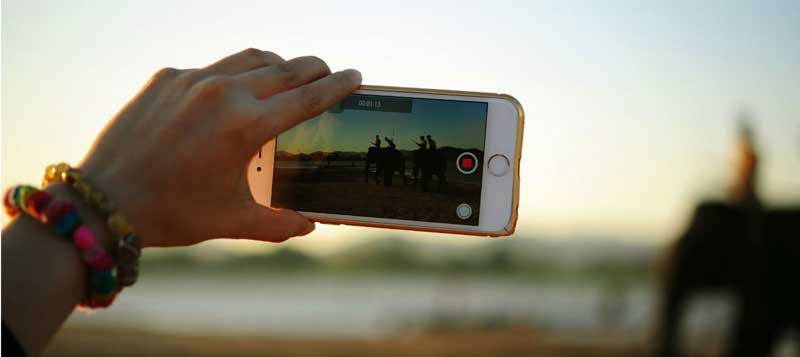
We, as people, are hardwired for story.
That’s not a hunch. It’s science, the theory of which goes back to the days of Aristotle.
This Ted Talk on Neural Coupling and storytelling by Uri Hasson is an absolute eye-opener.
It turns out we are 22 times more likely to remember a story than fact.
It kind of makes sense doesn’t it? When we hear a story, we automatically want to know what happens next.
A loop is opened and our instinct is to have it closed.

The power of brand storytelling help people understand what a business does, how it does it and most importantly, why it does it.
The more people understand and believe this purpose and story, the more they’ll engage with the brand.
So when it comes to your purpose, you need to find that hook, that association, the story of the why and more importantly, why the audience should care.
Execute Your Purpose: Write a compelling story that engages.
To ensure your story is fit for your purpose ask the following questions:
Is it clear why your brand wants to tackle this issue?
Is your association obvious or have you spelled it out?
Who / what will benefit and what difference will these efforts make?
Have you provided a background to clearly articulate the problem?
Does it help our brand stand out from our competitors?
Does it inspire people to want to be part of it?
STEP 4:
Tell Your Story
The time an effort it takes to first, put your story together and then communicate it, in an easy to understand and inspirational way, demonstrates the initial commitment to the cause.
Just like anything in branding, communication of your story needs a strategy and different platforms and media would likely tell a different element to the story.
For example…
The story background including the goals and the mission of the cause your brand is tackling might live on your website.

Your day-to-day (or month-to-month) activities of your organisation to achieve its purposeful goals might be distributed through social media channels or a regular email updates.
Warby Parker are a great example of this, telling the background story on their site, while they distribute great content through Youtube.
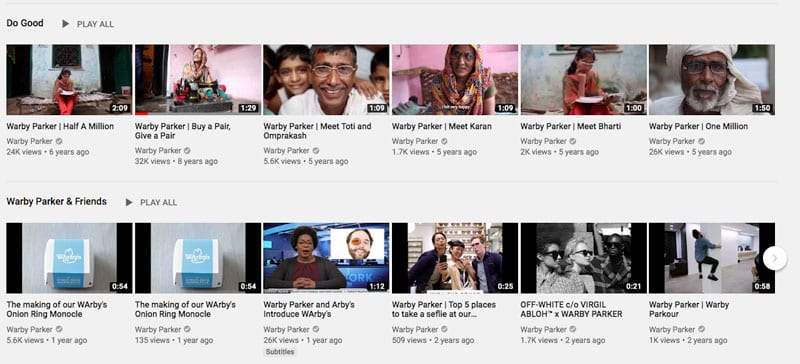
As with all communication in branding, consistency is imperative.
Whether it’s a tweet, an instagram post and email or a market announcement, any inconsistencies will lead to distrust and hamper purposeful efforts.
Execute Your Purpose: Tell your story consistently across channels:
To ensure your communication is fit for purpose, ask the following questions.
Have we communicated the story of our purpose in full? If so, where have we done that?
Do we document and communicate regularly, the actions we are taking in the persuit of our purpose?
Is this communication visual and regular and does it engage our audience.
Does our communication encourage interaction and involvement?
Does it generate conversation around the broader topic?
Are we leveraging and engaging existing likeminded audiences?
Is our communication consistent and do we have processes in place to ensure this?
Are we reporting our successes and failures in a monthly, quarterly or annual report?
Wrapping Things Up
Although the purpose opponents are plentiful and trust in brands has rarely been lower, brand purpose is a concept that is not going away.
The new generation of consumers and workers have more power than we have ever seen.
They say what they want, set the expectations and they expect brands to do more.
As each generation becomes more socially and environmentally aware than the one before it, their demand for change will increase.
They will choose with their wallets and clicks, who gets their hard earned cash and those votes will be increasingly impacted by how the brand gives back.
As long as they want brands to impact the world positively, purpose will become a growing necessity for most brands.
Now It’s Over To You
So, if you’re gonna go down the road of implementing Brand Purpose into your Brand Strategy, then you know now there’s more to it than bashing together a fluffy statement.
You also know it’s a game of high stakes so you need to do your research.
This is how I make sure the brands I build have a solid foundation.
Now I want to turn it over to you:
Are you building a brand (or many brands) in 2020?
Are you planning on going after the hearts of your customers?
Have you connected with your audience on an emotional level through a shared purpose?
Let me know by leaving a comment below right now!

On-Demand Digital Program
Brand Master Secrets
Make the transition from hired-gun to highly valued brand strategist in less than 30 days. The systems, frameworks and tools inside this comprehensive program are all you need to level up.


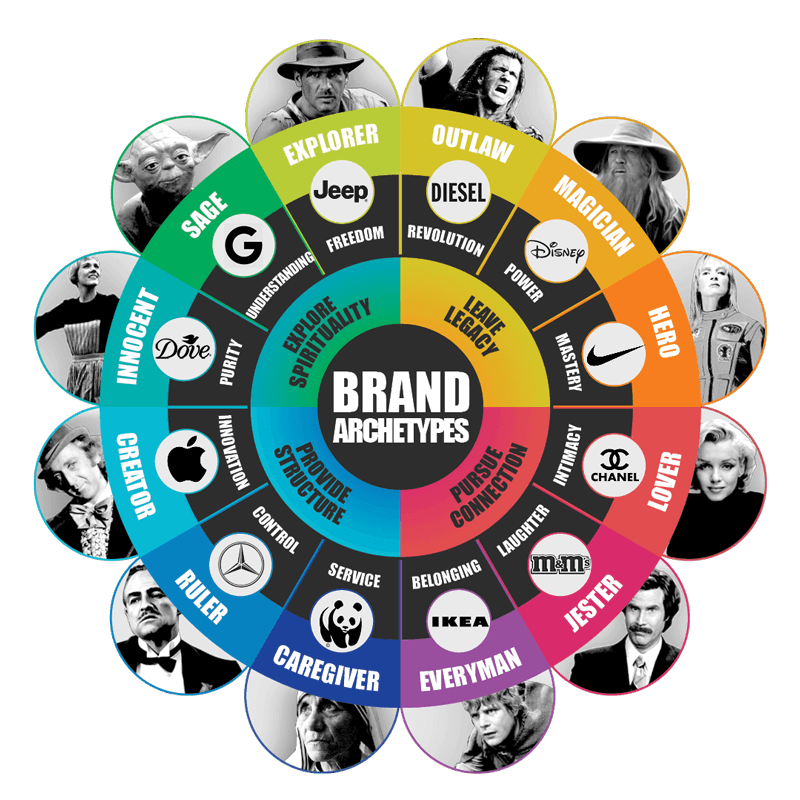

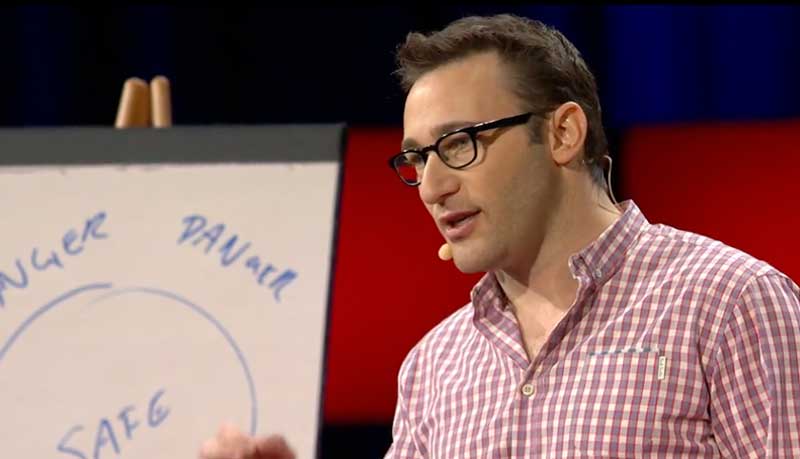
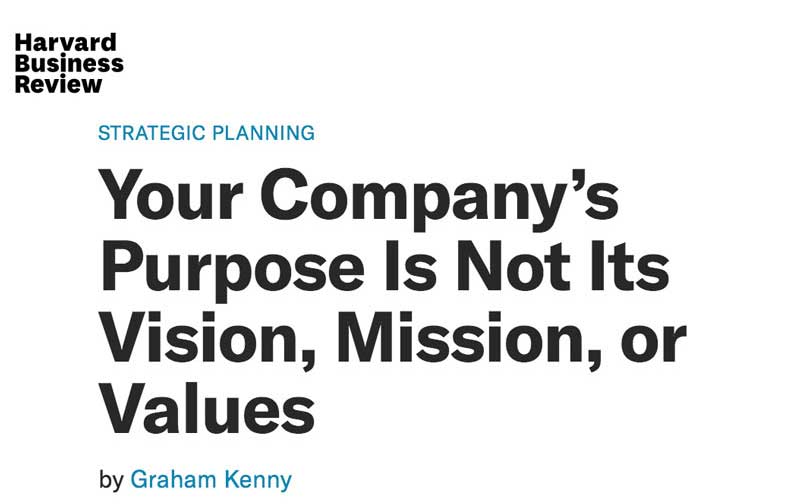



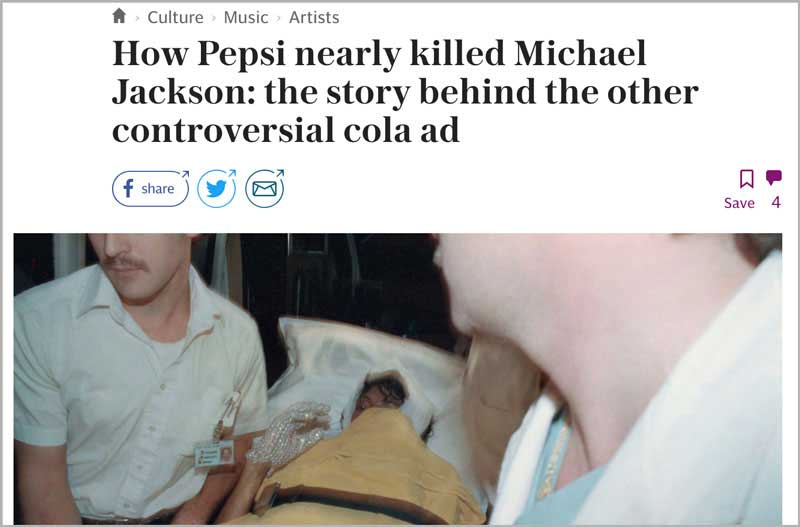


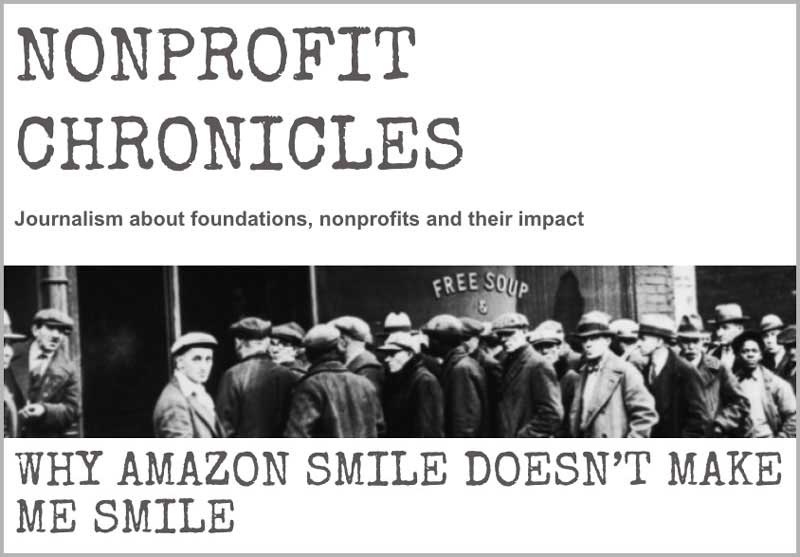
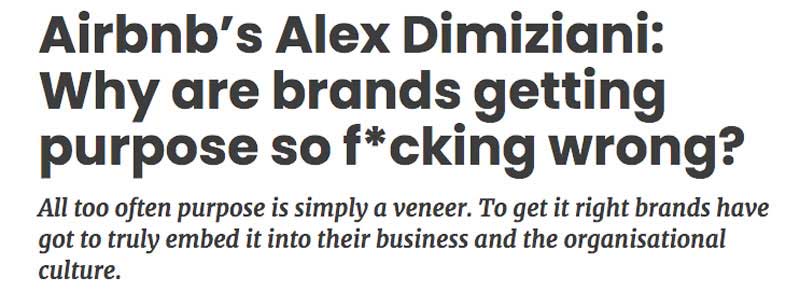

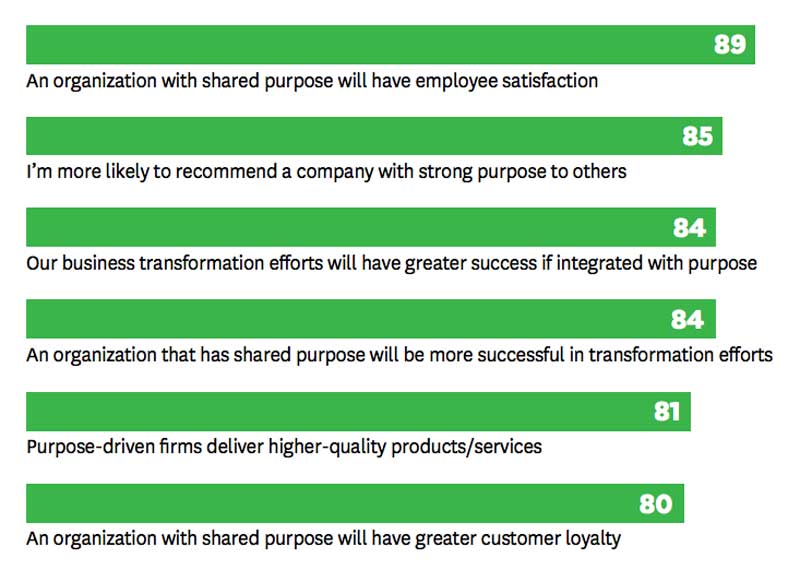
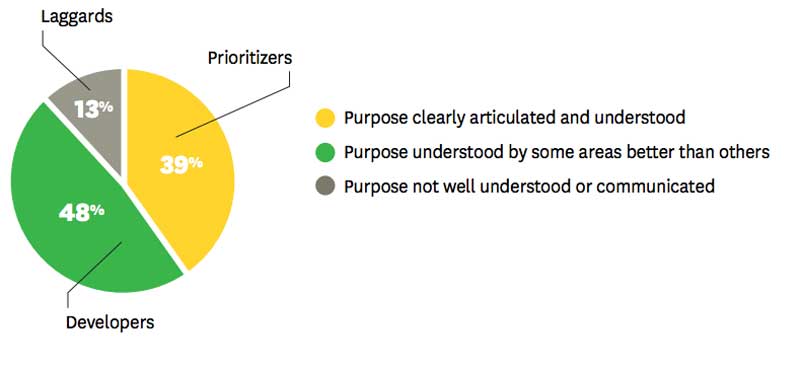
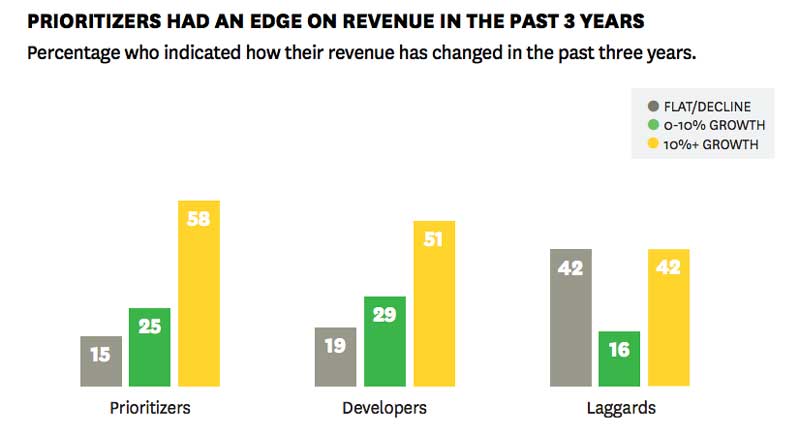

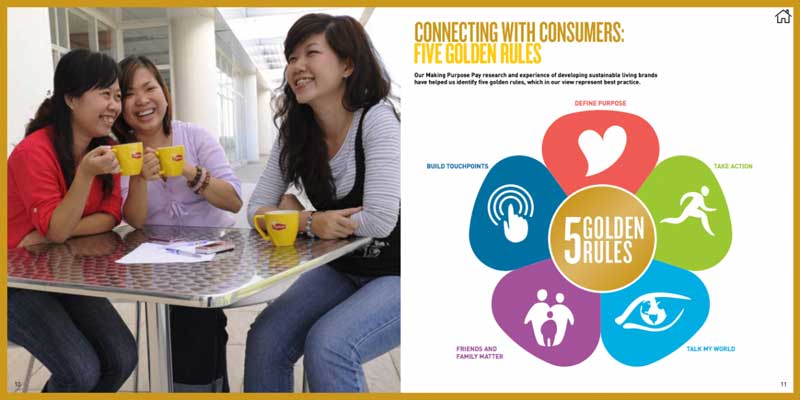
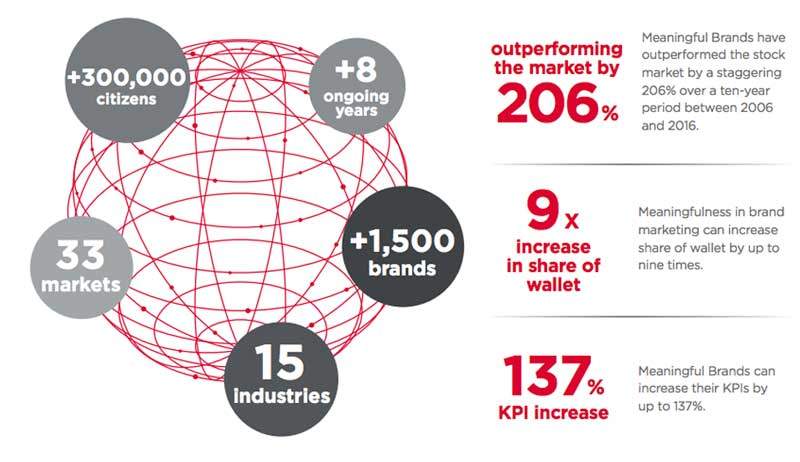




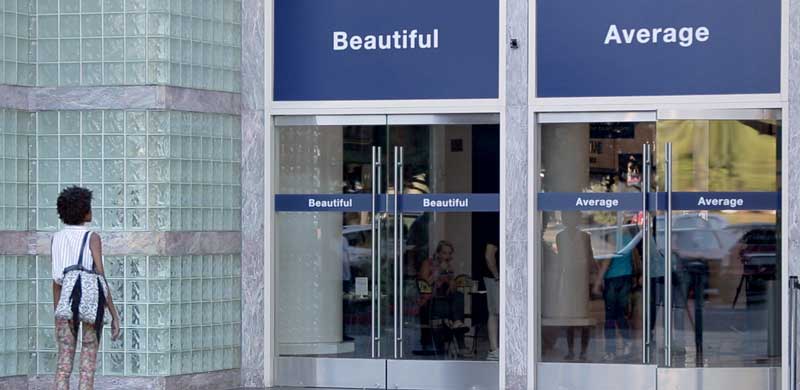

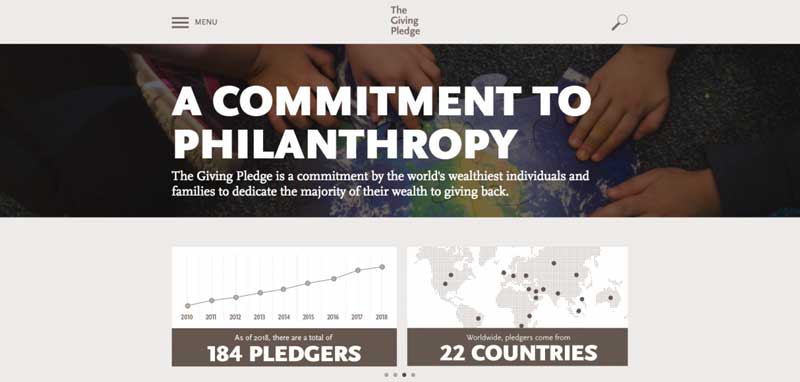


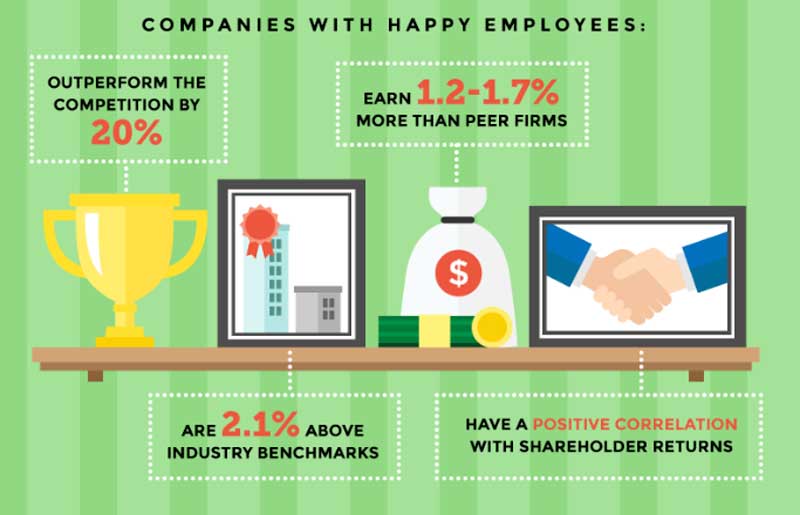



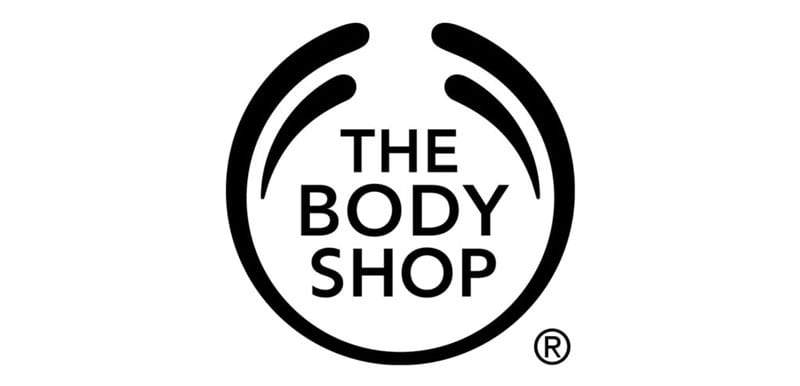




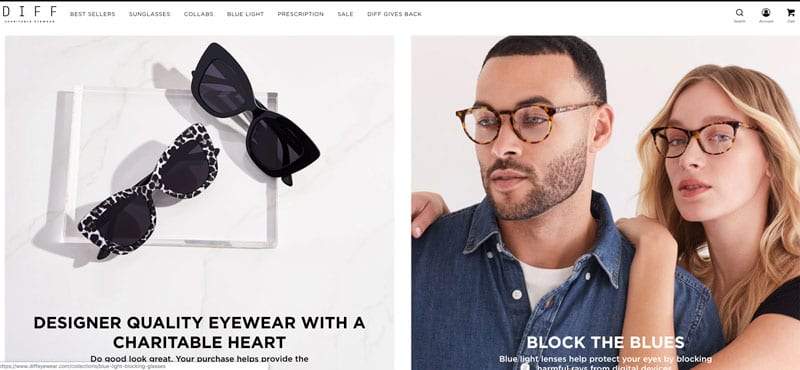

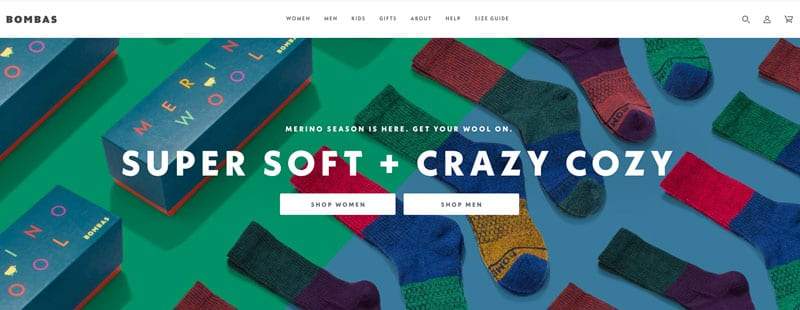

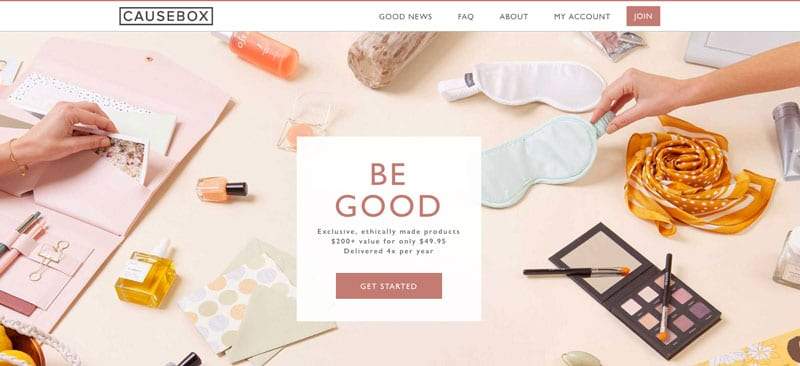
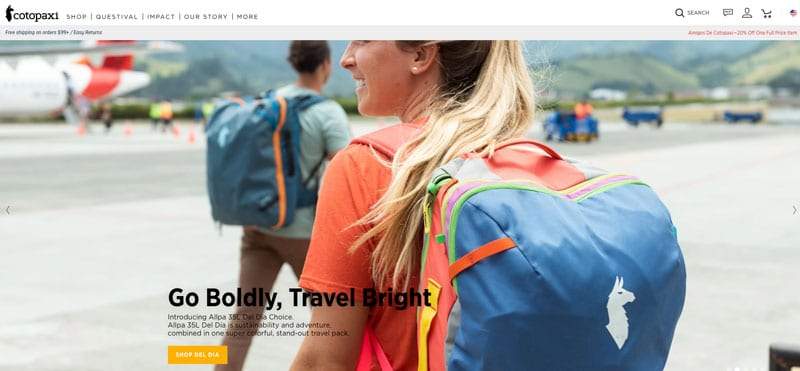


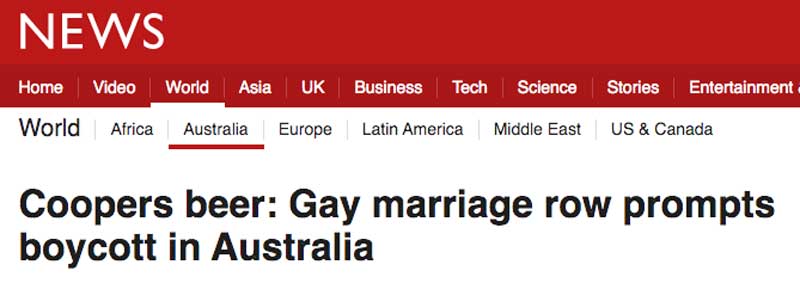




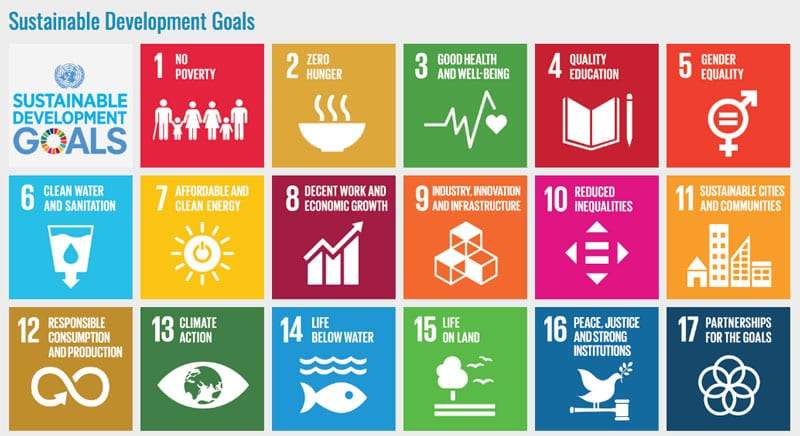








This was an outstanding master class in brand purpose. I took many notes. As a storyteller, it hits at the heart of my reason for being. Brand, purpose, action, share. THANK YOU!!!
Thanks Michelle. We’re all seemingly more in touch with why we do what we do… As a storyteller, you know that at the core of any good story, there’s a purpose being pursued.
Excellent and thorough article. Thanks very much for sharing all those varying articles and insights. Purpose truly is a driving factor in everything, because if we can’t understand what makes us tick and gives us a reason to push on beyond the adversities we face, we will quickly walk away from it all.
Well said Sasha,
Many brand builders develop purpose as a quick statement to check off the list. But if you can get the leaders to really buy-in, they’ll be more invested in the entire brand building efforts.
This is an amazingly, thrillingly inspirational guide for anyone who wants to make things happen with words, images, ideas and insights. I recommend that everyone in the communication professions watch it before they sit down to create a proposal or campaign or message to move people to better things. Bravo Stephen Houraghan..
Thanks Christian ??
Hi Valerie Thanks for your input, glad you enjoyed it. I would say the visuals presented were representative more of the iconic brands the fall within those archetypes more so than individual male or female characters. In the Hero infographic, the visuals are represented by a fire fighter, though in the Nike examples, a woman represents the hero. The greats brands are the masters of the Archetype
????????????
This is an extremely well put together argument for the pros and cons of brand purpose. While I personally err on the side of believing brands need a purpose I think the argument against it in this article provides a huge degree of context for how a purpose can sometimes be a red herring for a company. I would recommend this article to anyone looking to understand not only what a brand purpose is but also its value within context to business realities.
Excellent article.
????????????????
I haven¦t checked in here for a while because I thought it was getting boring, but the last several posts are good quality so I guess I will add you back to my everyday bloglist. You deserve it my friend :)
thank you
This really answered my drawback, thanks!
I love the efforts you have put in this, thank you for all the great content.
Very interesting info !Perfect just what I was looking for!